Mozambique Island (Ilha de Moçambique) is the quintessential UNESCO World Heritage Site destination, embodying all that we love about travel.
Ilha somehow feels like what a UNESCO site was meant to feel like—a living, breathing place pulled from the brink of ruin, with the hope of preserving something unique and significant to humanity’s story.
Now, be forewarned, Mozambique Island won’t have the level of tourist infrastructure one might expect in places like Zanzibar, nor is it a popular holiday destination like those found on numerous Kenya beaches.
This is an intrepid traveler’s destination, where the journey and the destination are one and the same.
Mozambique Island, like the country of Mozambique in which it’s located, demands more from travelers than simply being a passenger along for the ride.
Expect to work a bit to get here and to step out of your comfort zone once you’ve arrived.
For your efforts, also expect to be rewarded beyond your imagination with stunning sea views and sunsets, extraordinarily friendly and charming residents, and an authenticity found in few UNESCO towns in the 21st century.
In short, expect a travel adventure of the best kind.
Read on to discover more about this breathtaking, off-the-radar destination, including why you should go and where to stay, what not to miss, how to get to Mozambique Island, and so much more!
Why Visit Mozambique Island?
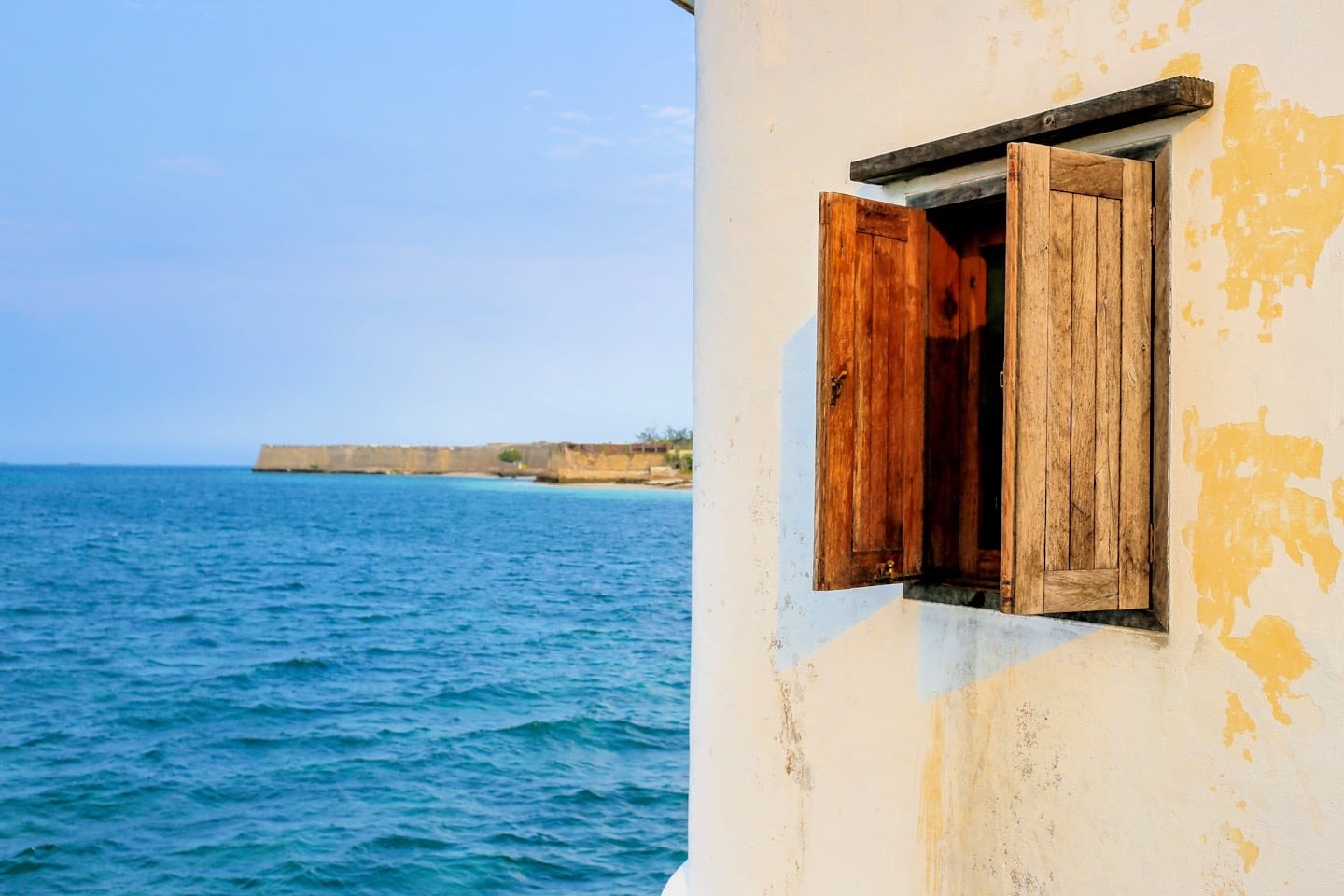
Many travelers like to compare Mozambique Island to Zanzibar and Lamu, Kenya, two ancient Swahili settlements also along the coast of East Africa and UNESCO sites as well. But to do so is to lose sight of what makes Ilha so special.
At present, the island simply isn’t set up to absorb large amounts of visitors, nor does it receive tourist numbers comparable to Zanzibar or even Lamu. Like much of Mozambique, tiny Ilha still falls short of offering its own residents the level of infrastructure enjoyed by residents of Zanzibar or Lamu.
Ilha de Mozambique is not easy to reach, nor is the island cheap. There are many mid-range lodging options, but few budget or luxury options (but this is slowly changing). That puts Mozambique Island squarely off the tourist trail.
And that is perhaps why Ilha is so fantastic for travelers willing to make the leap.
It’s a vibrant community of 14,000 Mozambicans that just happens to host the occasional smattering of intrepid travelers throughout the course of the year.
Because of the island’s virtual overnight abandonment a century ago, most of the old city remains as it once was, albeit crumbling—much of it ruined by time and neglect—which makes the island all the more fascinating.
But there’s no denying that the island, itself, is the real attraction here. Walking the sand and cobblestone roads through winding allies of steady decay and pockets of restoration—passing dhows gliding lazily across the bay, and the incomprehensibly friendly residents—forms the real charm and mystique of this place.
What is the Island of Mozambique Known For?
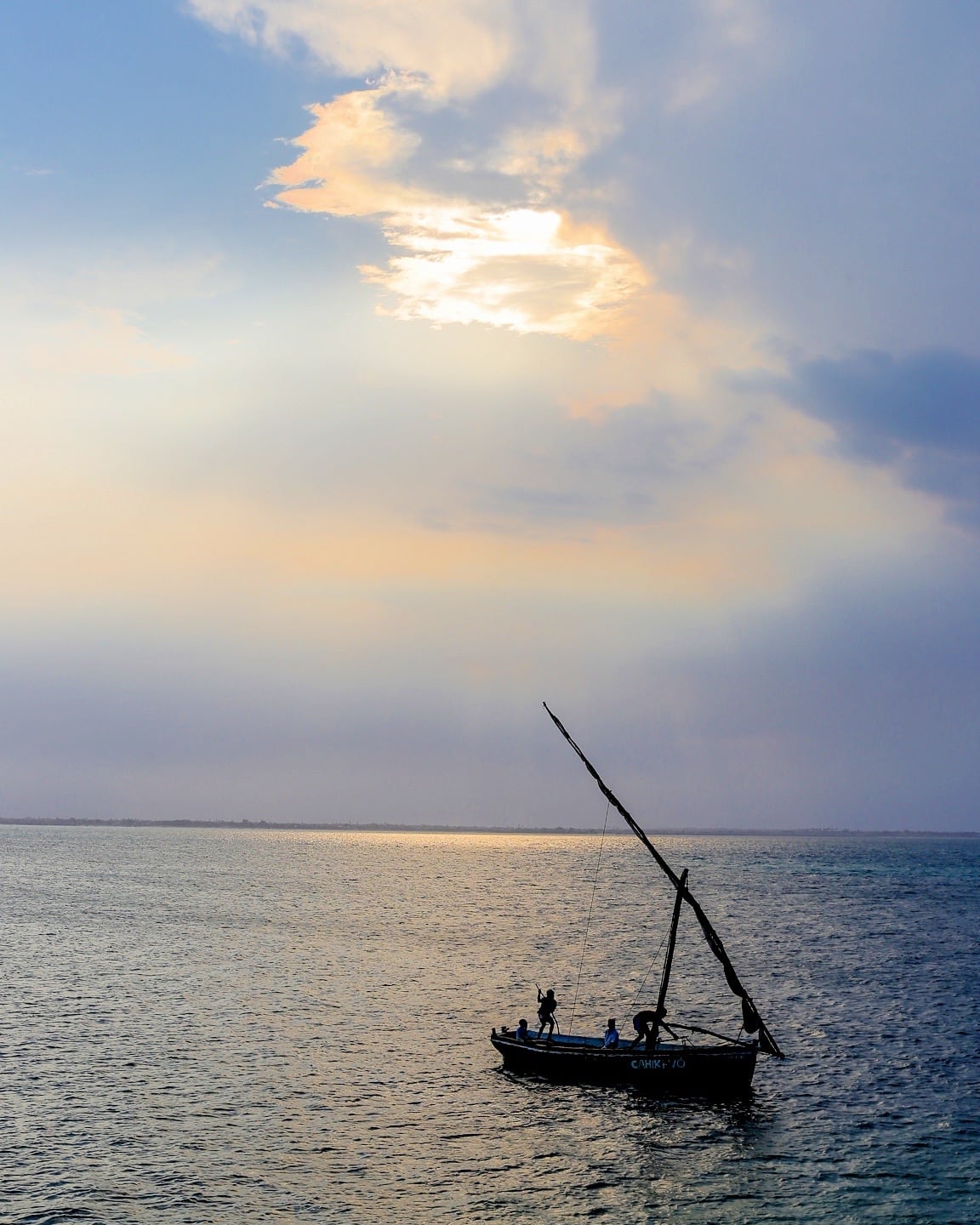
The story of Mozambique Island is one of meteoric rise—from relative obscurity to one of the most significant trading ports in the known world of its time—followed by a massive reversal of fortune, leading to decline and return to obscurity.
Following decades of political instability, UNESCO status and traveler interest has again fueled a resurgence signaling an upswing in the island’s fortune.
In the late 15th century, Portuguese explorer Vasco da Gama landed on Sultan Ali Musa Mbiki’s small island of Arab shipbuilders. Within a decade, the Portuguese took control of the island and named it in honor of the deposed sultan: Moçambique.
By the close of the 16th century, Moçambique would become the capital of Portuguese East Africa and one of the largest centers of slave trade on the continent.
Following independence in 1975, the entire country was re-christened “Mozambique” (Portuguese: Moçambique).
By that time, however, the Island of Mozambique had been in decline for some time. The island’s fate was sealed with the opening of the Suez Canal, signaling a move of the capital to Lourenço Marques (present-day Maputo) in 1898.
Where to Stay on Mozambique Island
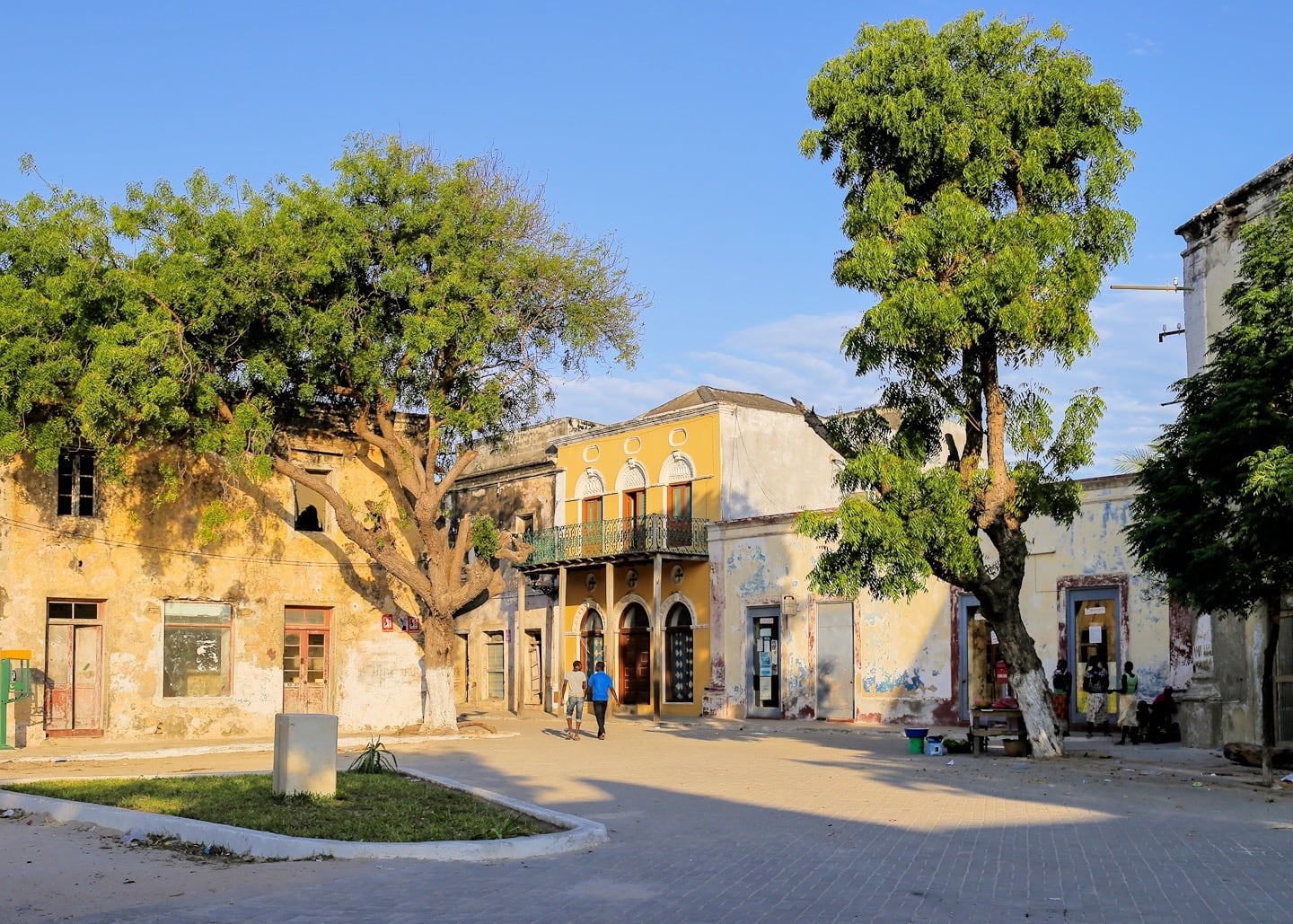
As with the rest of Mozambique, the Island of Mozambique is not a budget travelers paradise. There are few reliable bets centrally located on the island that would pass for cheap.
But that doesn’t mean there isn’t good value to be found on Ilha!
Our carefully selected top picks below represent some of the best value for the money found anywhere in the country.
We’ve stayed in hundreds of hostels, hotels, guesthouses, homestays, and apartments over the years across the globe and have our selection process down to a science.
Below, we’ve taken what we learned from a month of independent travel up the length of Mozambique (on top of having lived here for two years!) and combined it with all-new hotel research for this year.
All of our top picks are top-rated, centrally-located, and are considered budget to midrange accommodation in Mozambique. They also exude some sense of place and/or local charm because we like that.
Bottom line: if we were planning our trip to Ilha de Mocambique RIGHT NOW, we’d book one of these four places.
Our Top Picks for Lodging on Mozambique Island
Our Top Pick! Feitoria Boutique Hotel is an exceptional beachfront stay in the heart of Stone Town, boasting a private beach area, outdoor swimming pool, sun deck, and exquisitely decorated AC rooms. If you’re looking for upmarket accommodation in Ilha de Mocambique with all the comforts and amenities, Feitoria Boutique is your ticket (from US$112/night).
Top Budget Choice If you’re looking for centrally-located UNESCO charm on a budget, look no further than Cafe Central. Includes breakfast, air conditioning, en suite bathrooms, and pool! If street noise bothers you, be sure to ask for a quiet room, as some rooms are quieter than others (from US$49/night).
Heart of Stone Town Sunset Dream B&B is another great budget to midrange choice in the heart of Stone Town. Old world charm and stunning rooftop views! Dorm beds and sea-view fan rooms with shared bathroom for budget travelers. En suite rooms with aircon for a bit more. Includes breakfast.
Top Mid-Range Choice Jardim dos Aloes Boutique B&B is a bit more upmarket than the previous offerings. But expect a lot more amenities and value for your money at this place. Balconies, air con, and en suite bathrooms with an exceptional breakfast included (from US$103/night).
What to See & Do on Mozambique Island?
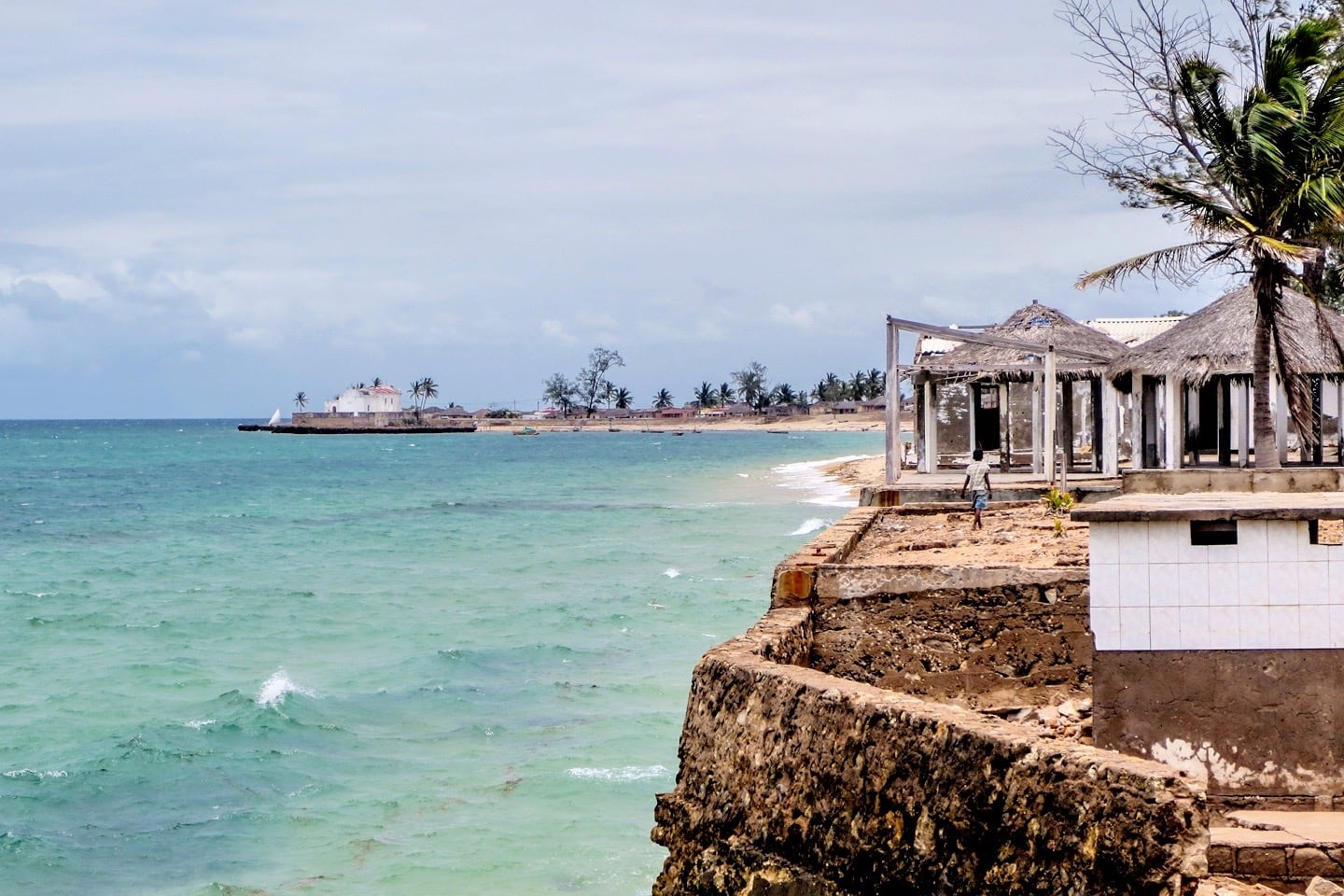
Having UNESCO status means there are no shortage of historic (if dilapidated in many cases) structures across the island.
While these structures make up the majority of places to visit on Mozambique Island for visitors, there’s so much more to the island! Here’s a list of our favorites.
The 3km-long island is divided into two main parts: Stone Town (the old, and largely uninhabited, colonial quarter) and Makuti Town (the very-much lived in former laborers’ and freed-slaves’ section, now home to 14,000 people).
Unlike previously mentioned Lamu or Zanzibar, Ilha’s Stone Town is quiet and sleepy, save for Sunday mass and student traffic between Makuti Town and the large Secondary School near the 15th century fortress.
Top Sights in Stone Town
Ilha has a handful of historical sites that are very much worth your time. All of these (with the exception of the off-island Ilha-Fortim de São Lourenço) are located in Stone Town.
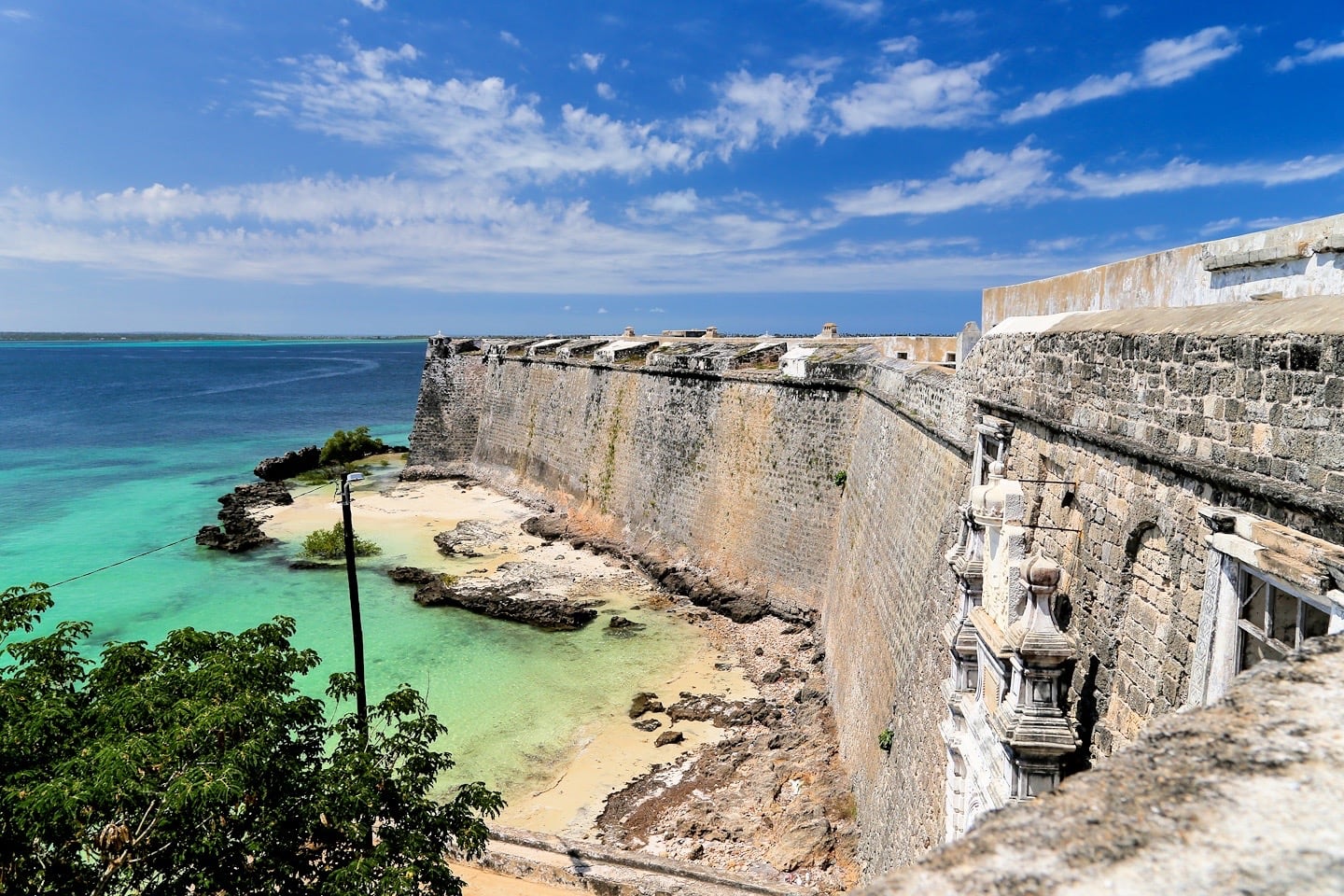
Of the historical sites of Ilha de Mocambique, Fortaleza de São Sebastião is perhaps the most impressive. This 15th century Portuguese installation is as enigmatic as it is old, and chances are, you’ll have the vast complex all to yourself!
In addition to being the oldest surviving fortress in Sub-Saharan Africa, it is also home to the oldest surviving European structure in the entire southern hemisphere—Chapel of Nossa Senhora de Baluarte (Our Lady of the Stronghold chapel).
Plus, the views from the ramparts are some of the most stunning to be found anywhere on the island!
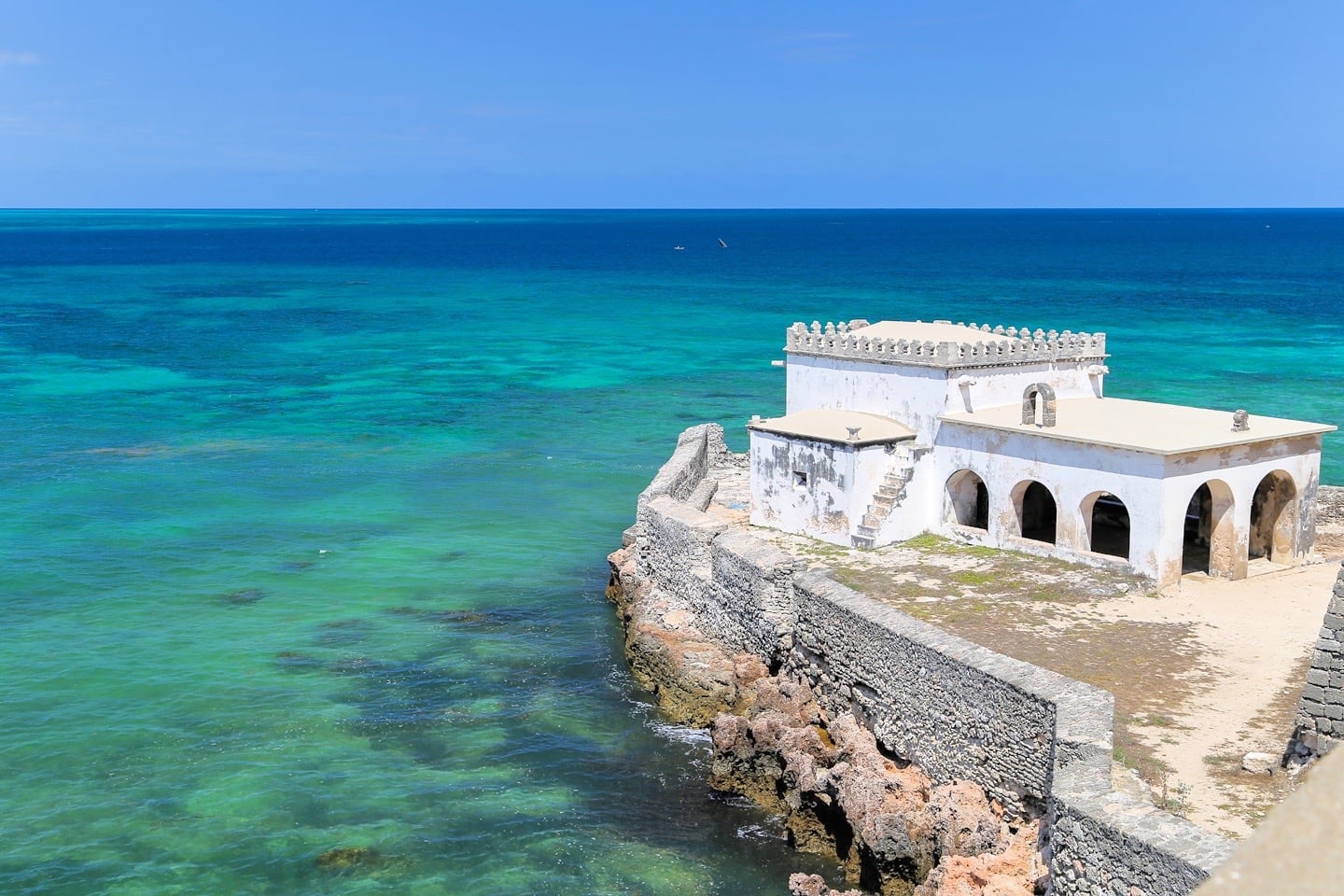
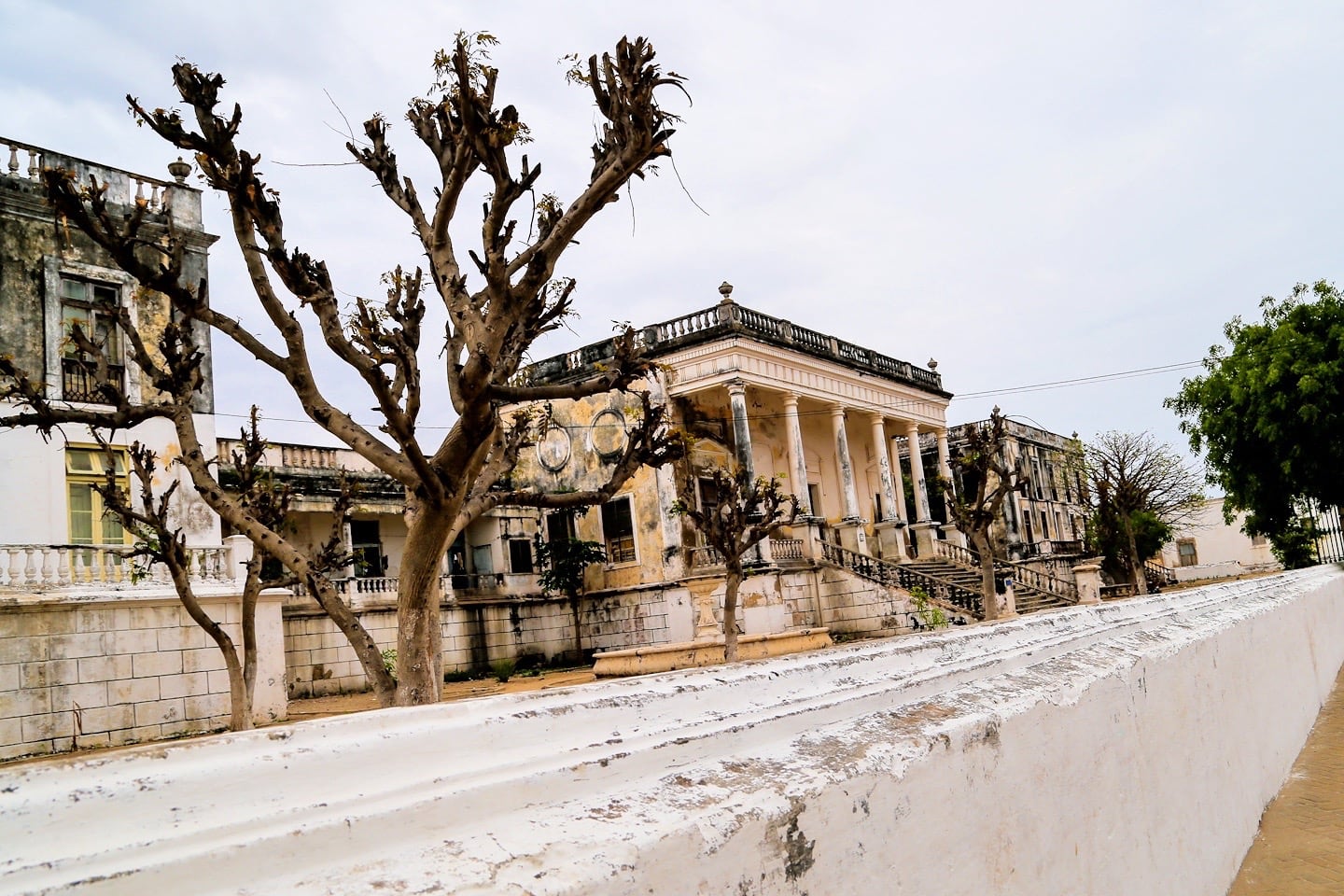
Next up, we have one of my personal favorites, the city’s former Governor’s Residence, which now serves as the island’s hospital. The peeling plaster and hacked trees out front gave it a haunting aura that both terrified and fascinated me every time we passed the place.
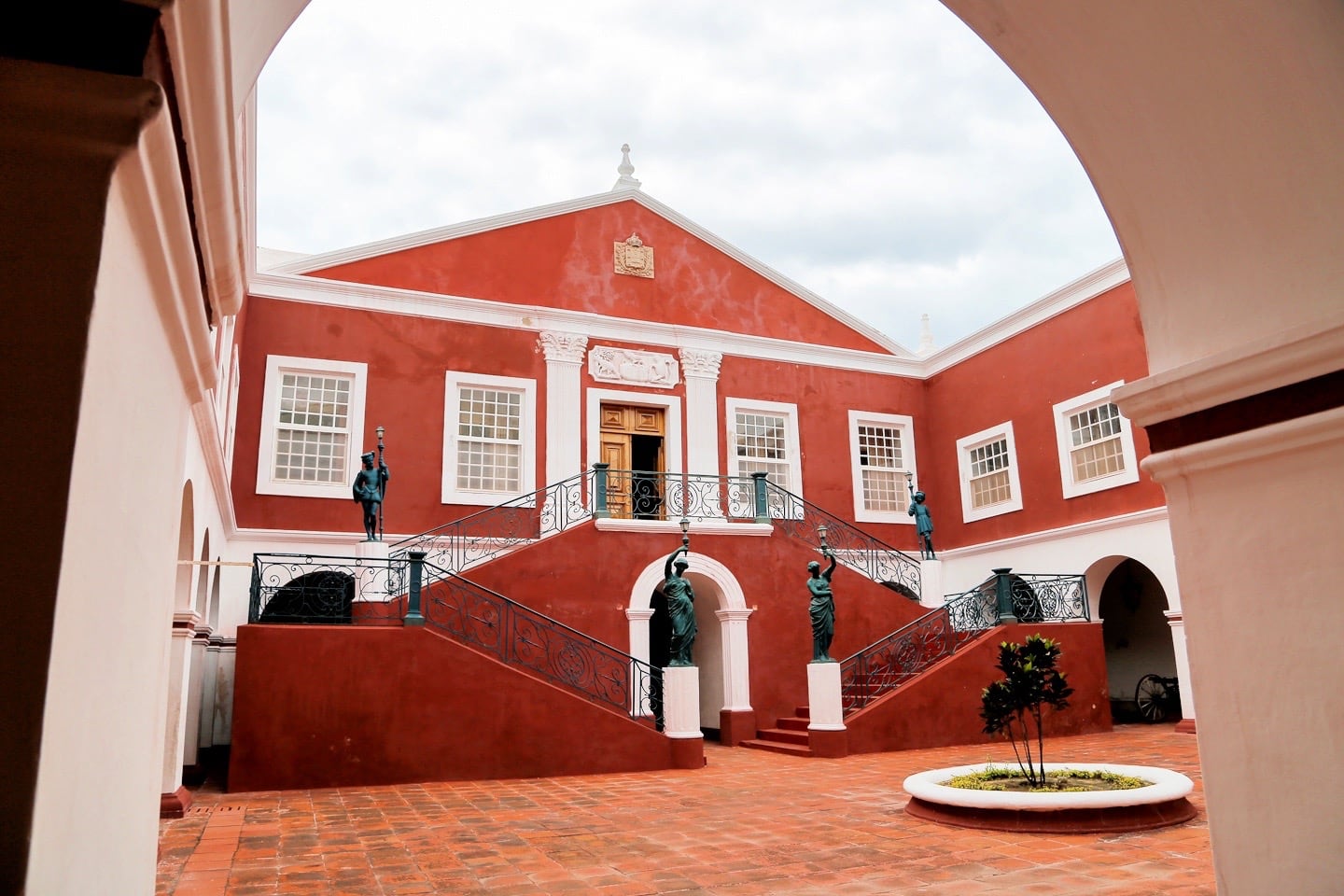
The Museu da Ilha de Mocambique (Museum of Mozambique Island) is a good place to start your self-guided tour of the city.
The former Palace of São Paulo also happened to be one of the more freshly restored of the town’s historic structures when we visited.
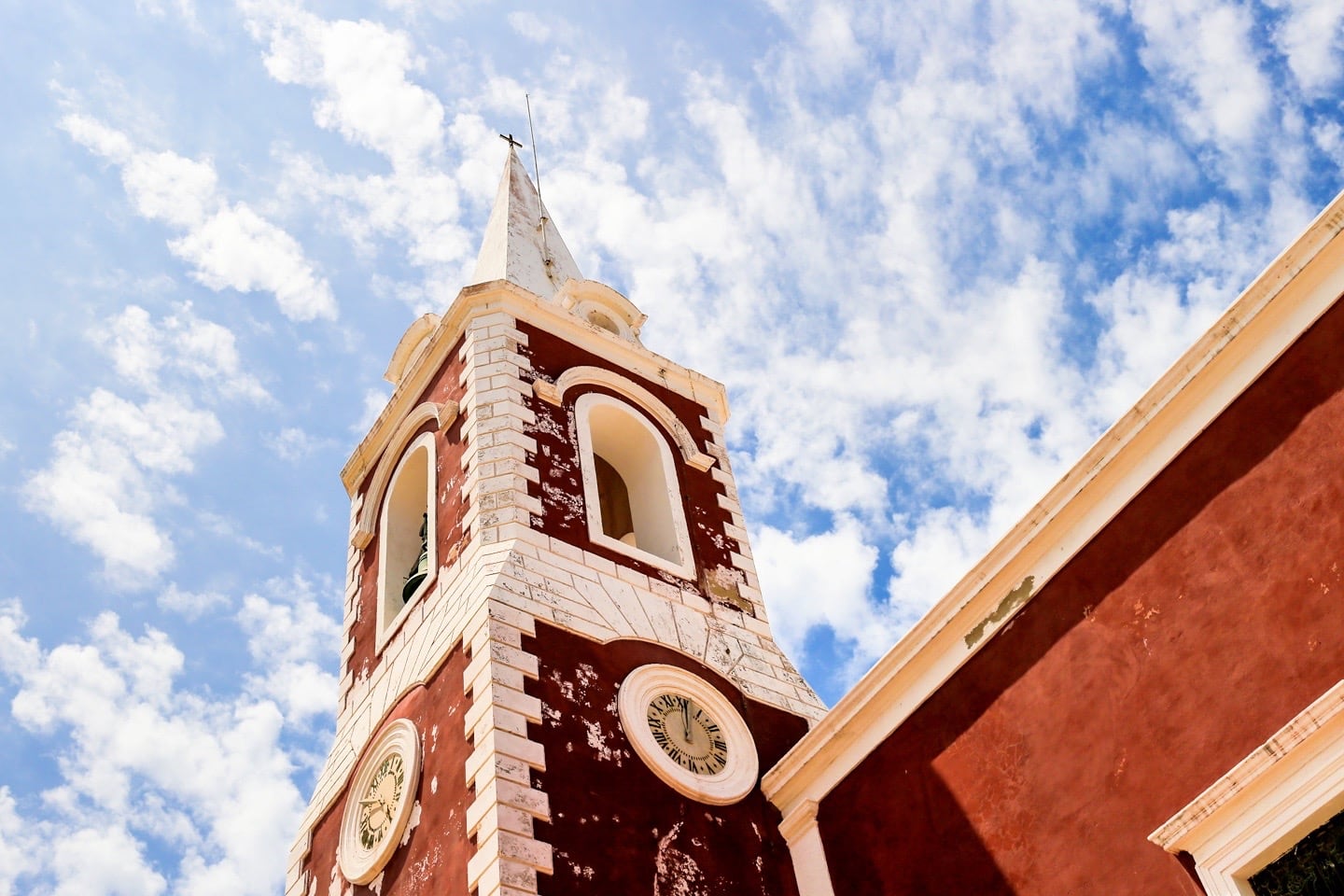
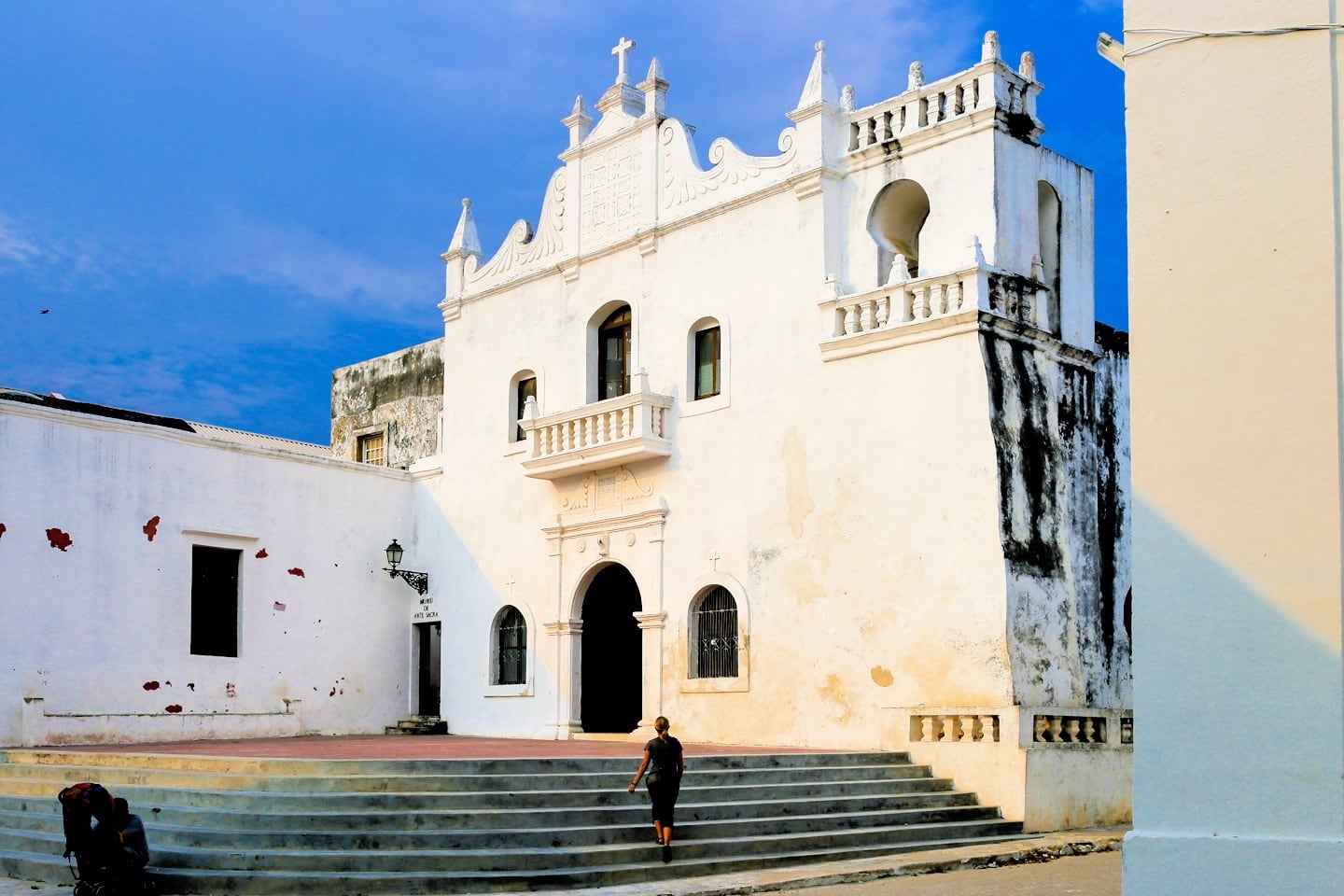
The Misericordia Church is also worth a stop, particularly if you happen to be visiting during Sunday morning mass.
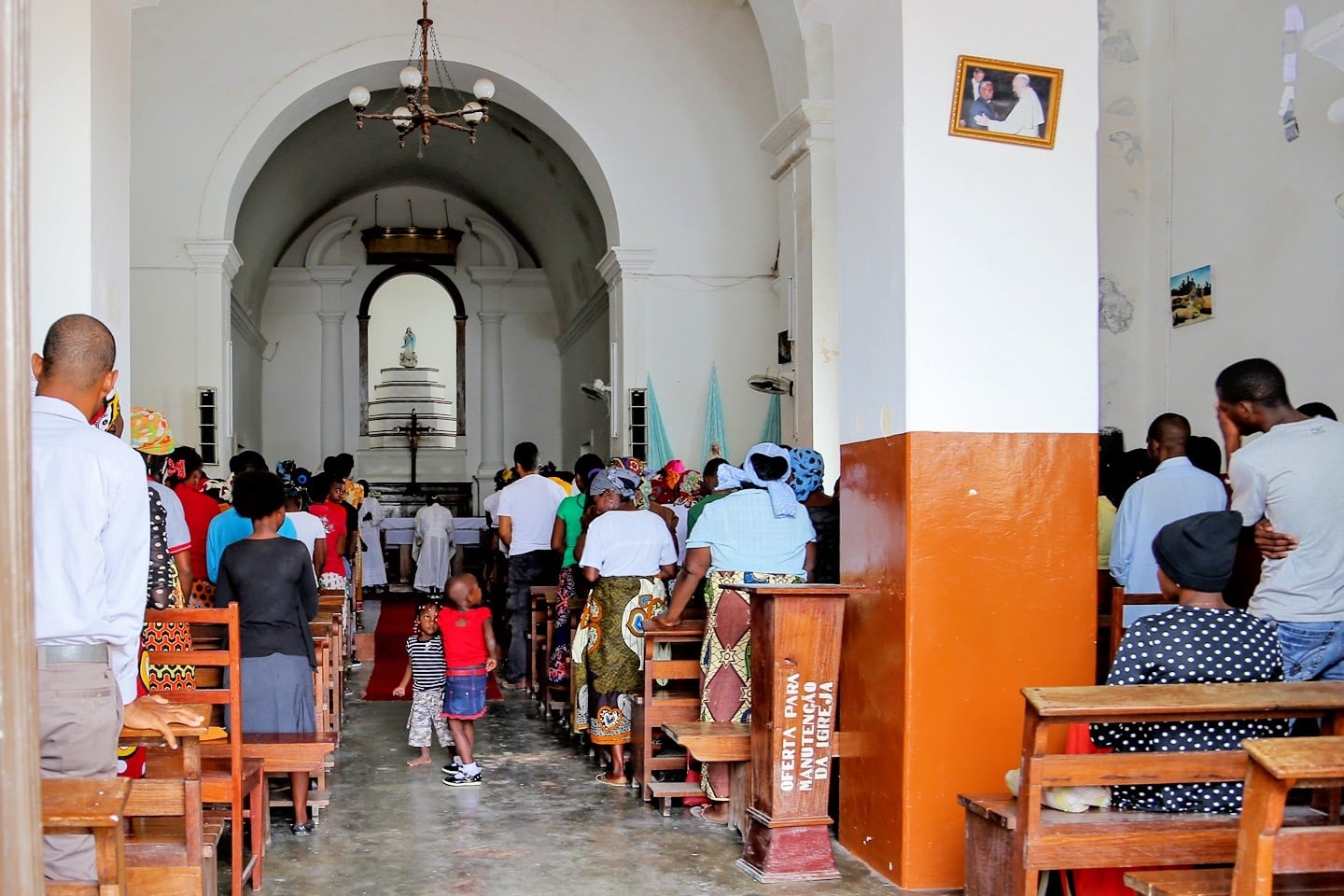
While the above historic sites offer a glimpse into the island’s colonial heritage, a stroll through the winding alleyways of today’s Ilha is just as worthwhile, if not more so.
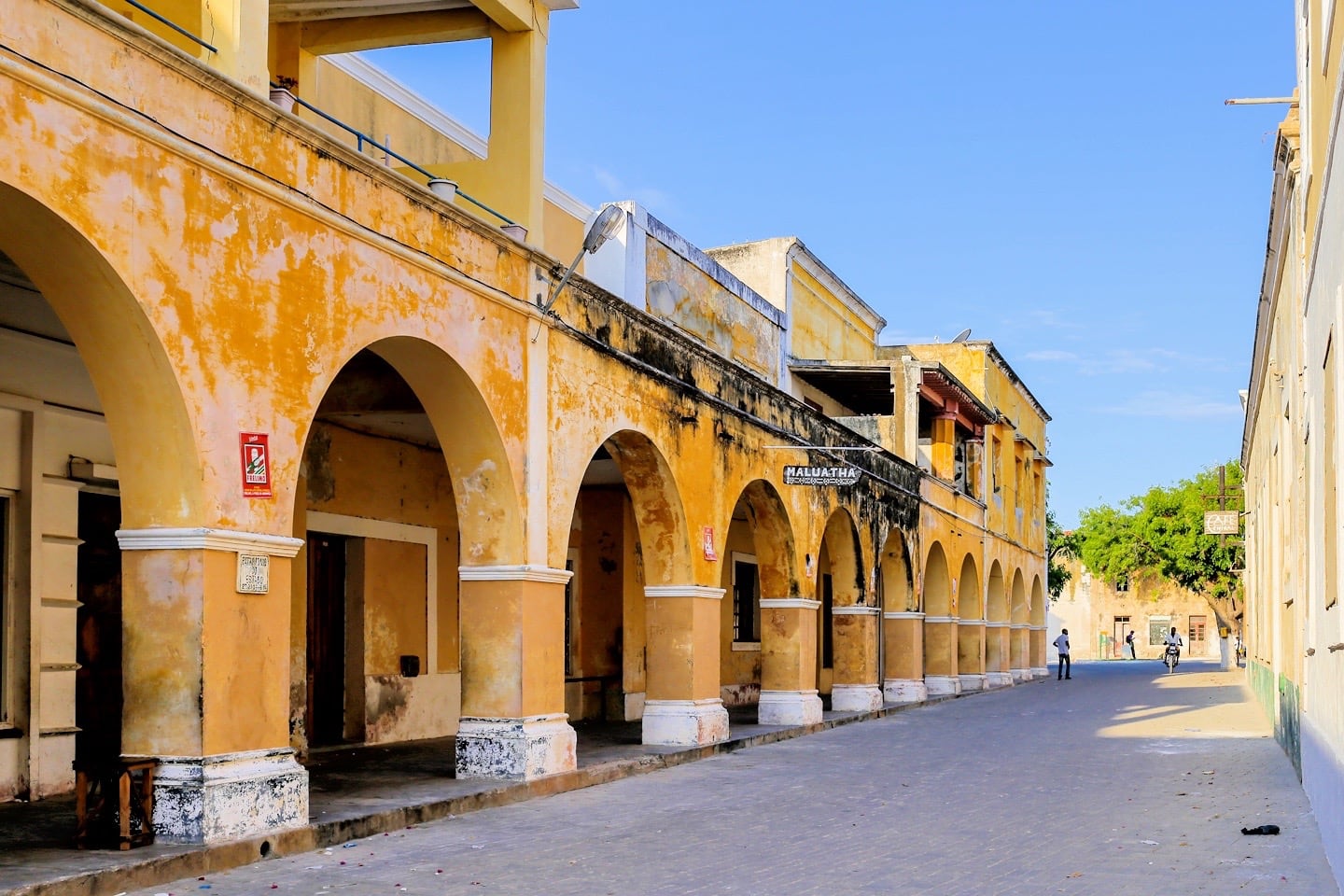
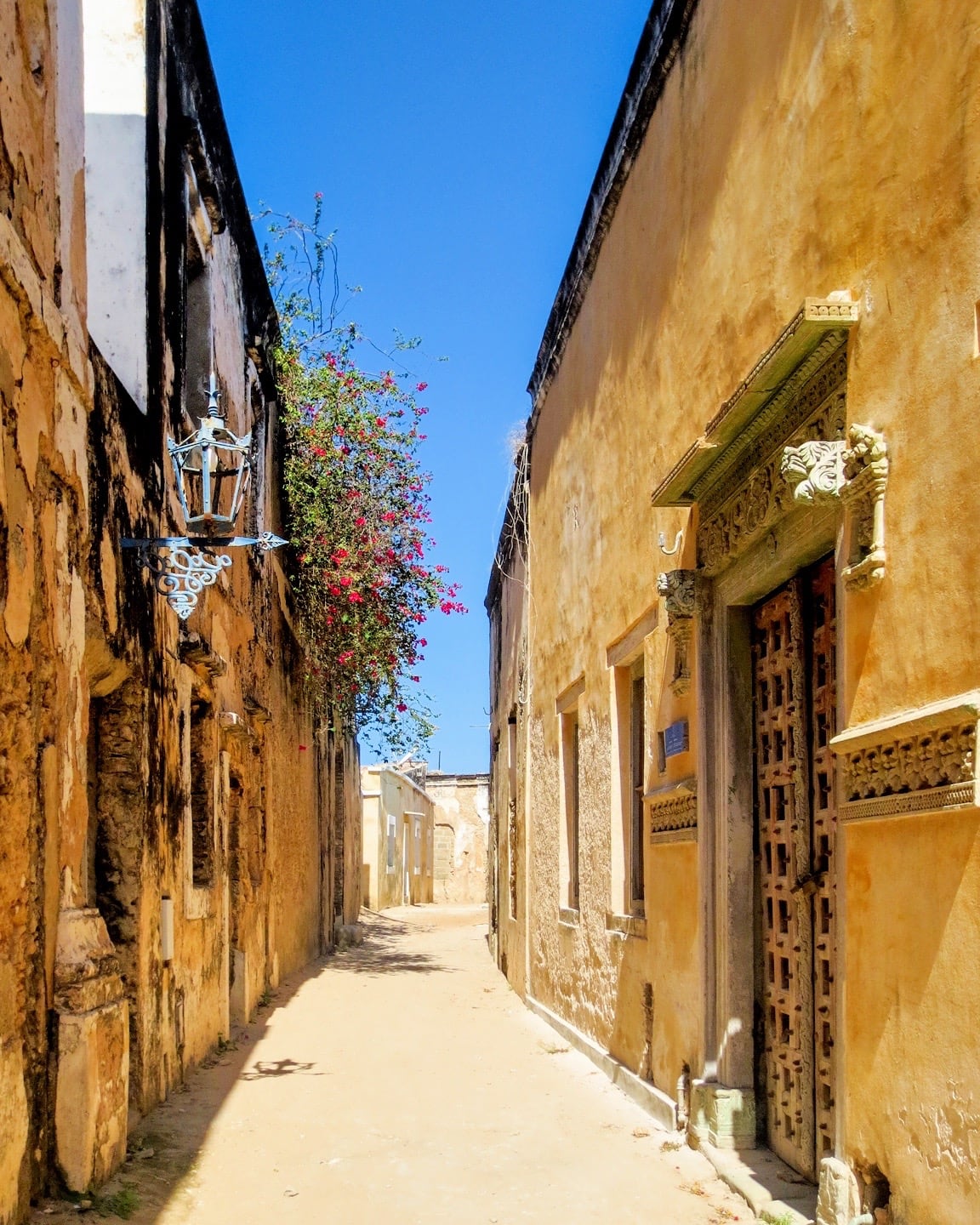
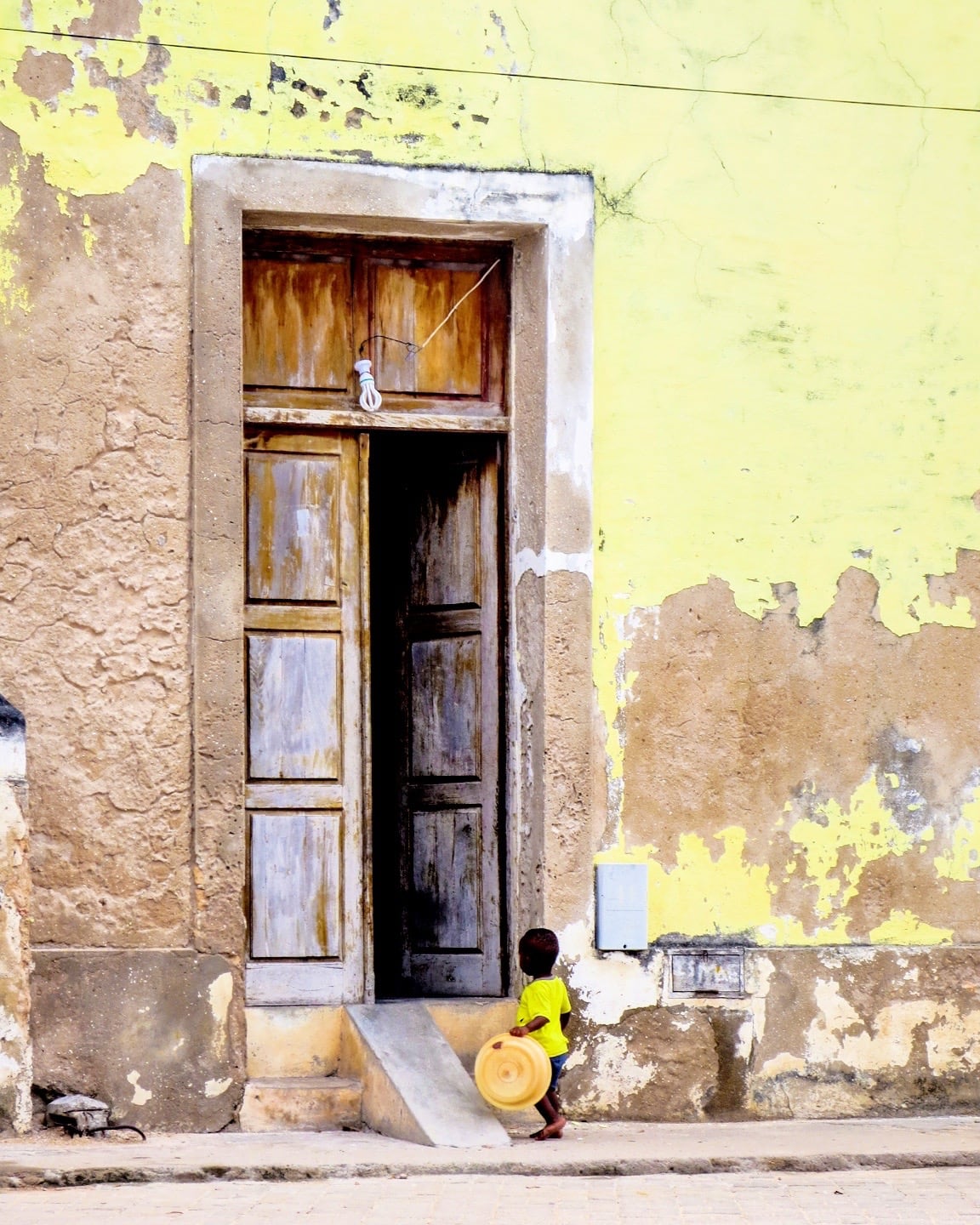
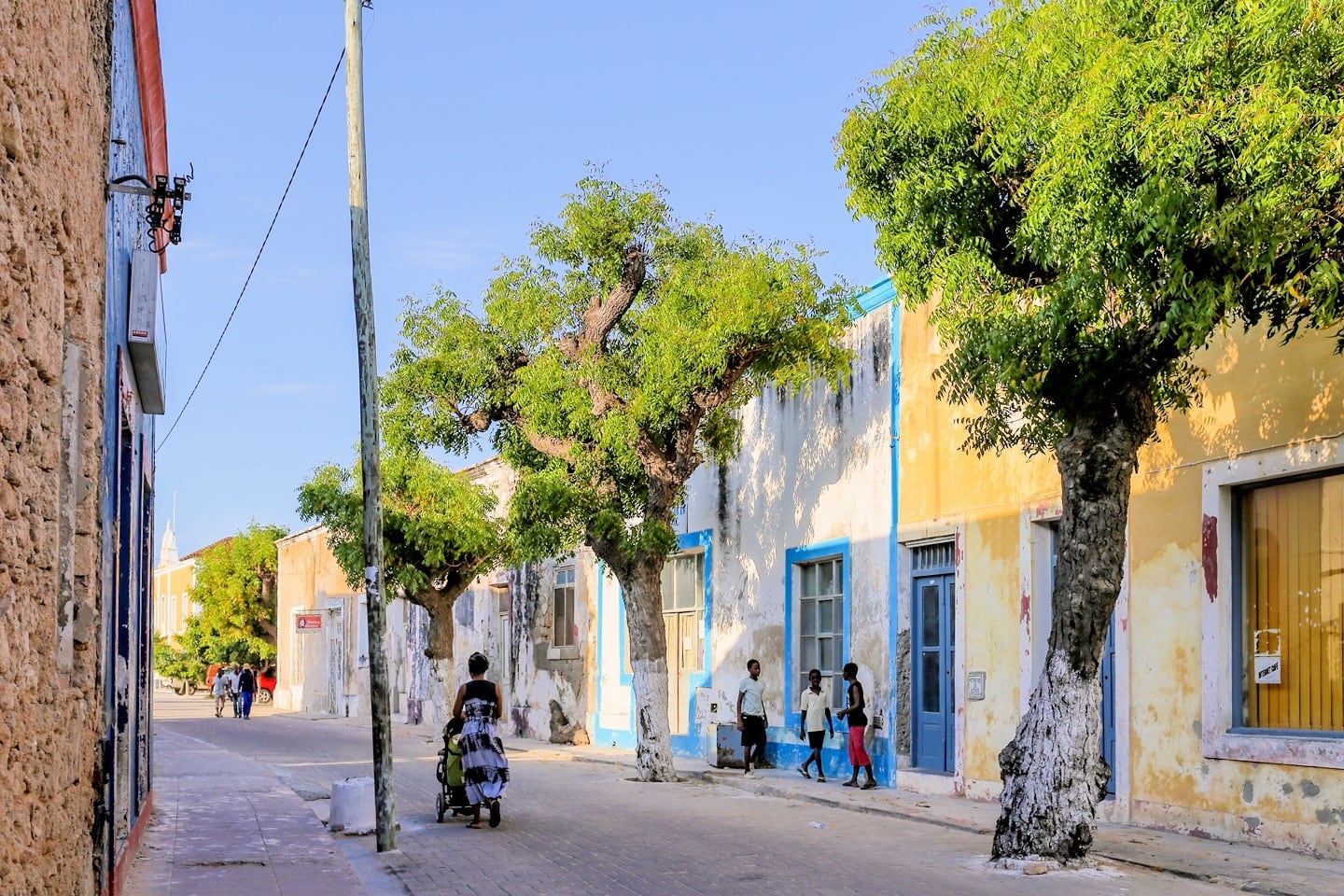
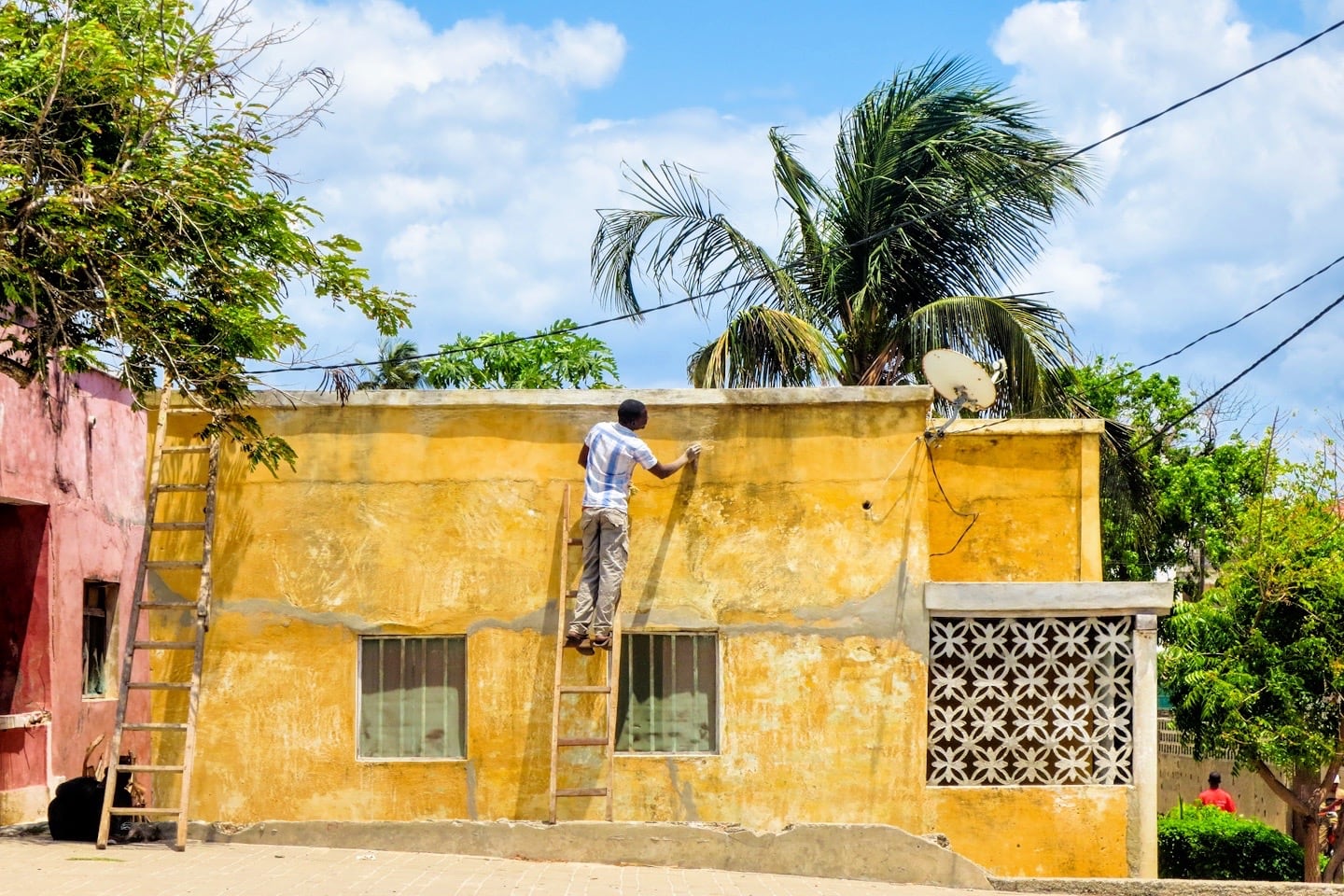
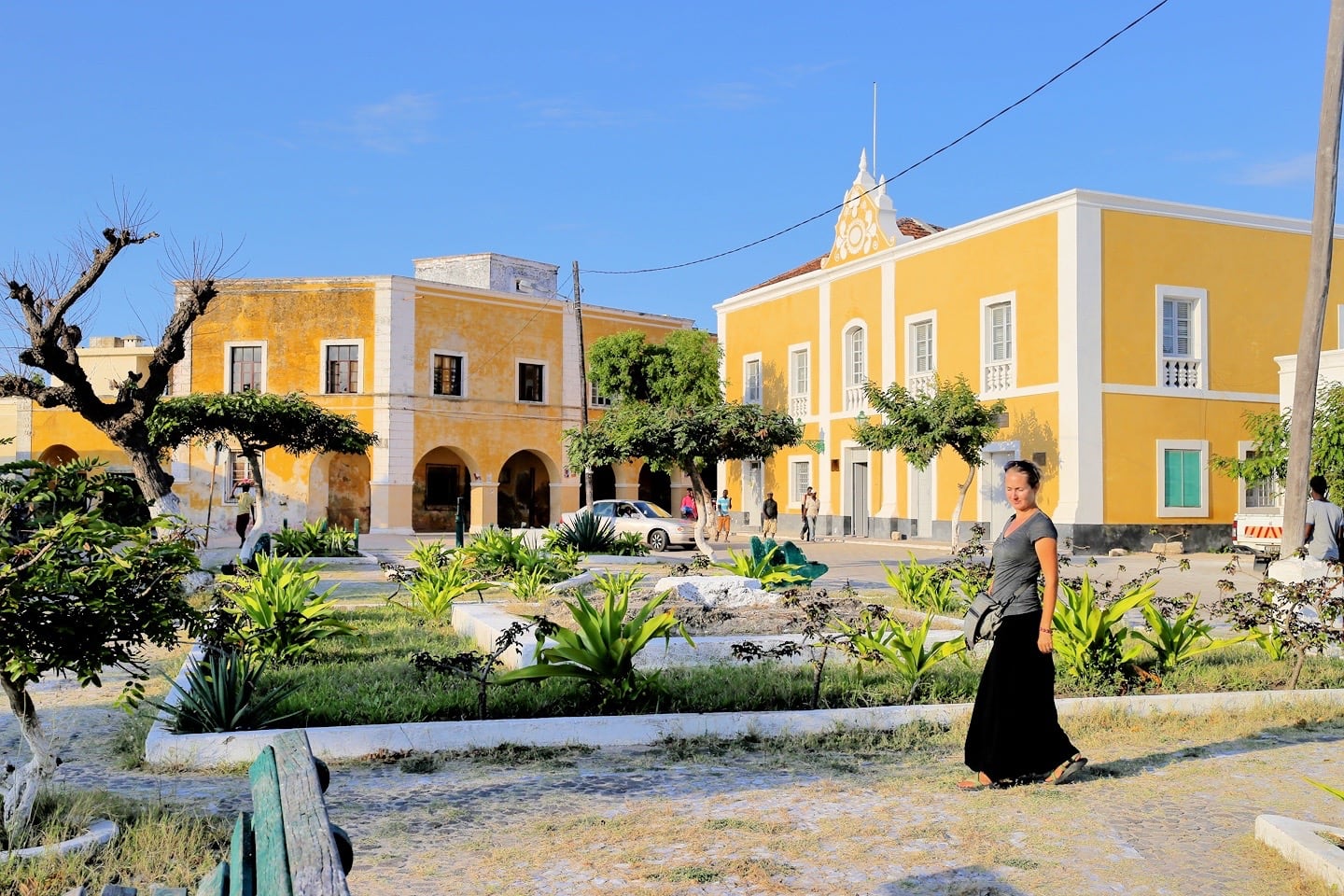
Places to Visit Elsewhere on Ilha de Mocambique
The concentration of historic buildings in Stone Town makes for a fascinating, if somewhat short, journey back in time. But there’s much more island to be explored outside of Stone Town, and many fascinating discoveries to be had.
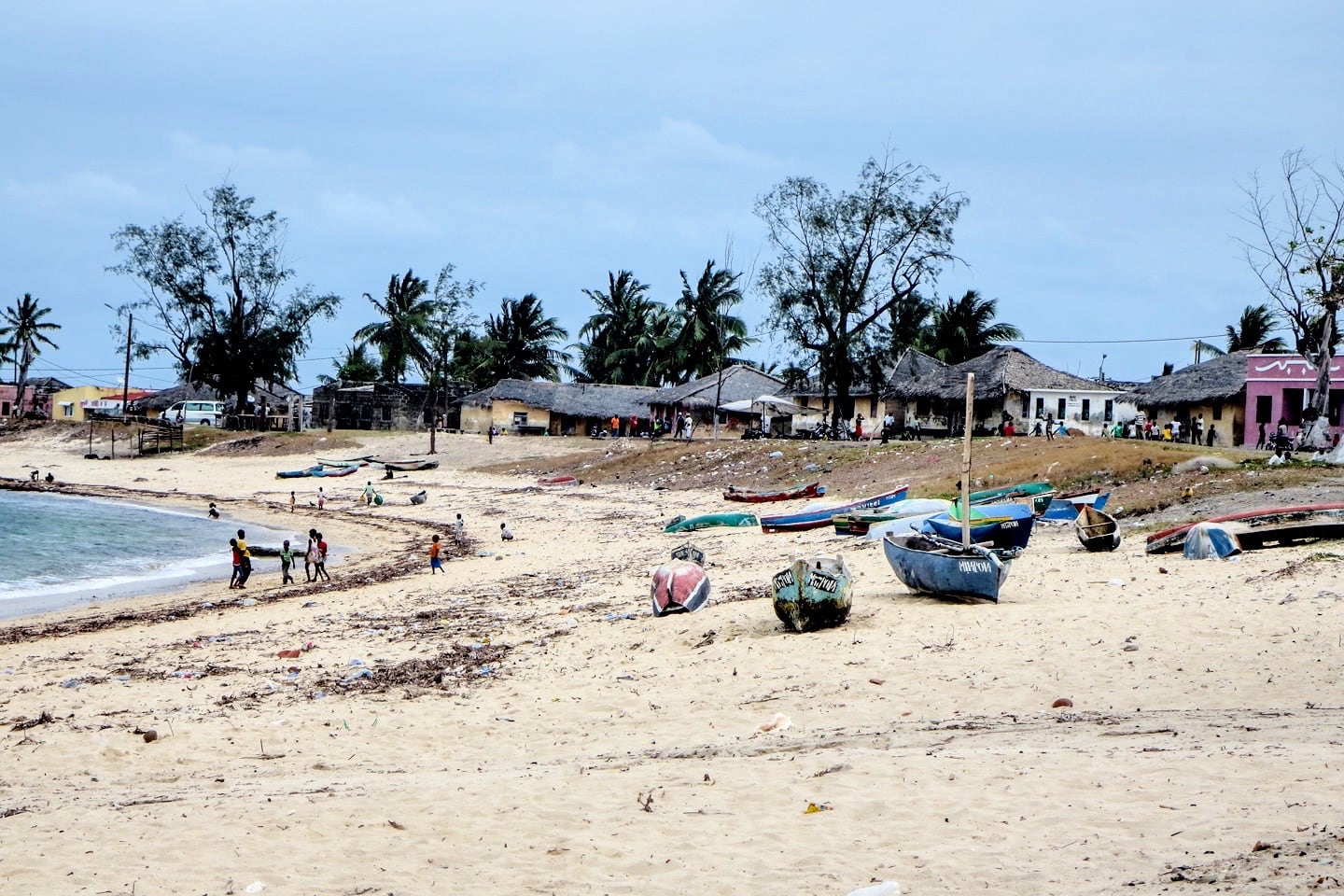
Makuti Town contrasts starkly with the old colonial Stone Town, not only in the materials used to construct the dwellings (stone and thatch), but also in its layout.
Makuti Town is the vibrant heart of the island where most of the town’s residents call home. This section of the island is much more dense than Stone Town and also sits about 8-10 ft. below street level, making life even more challenging for residents in the rainy season.
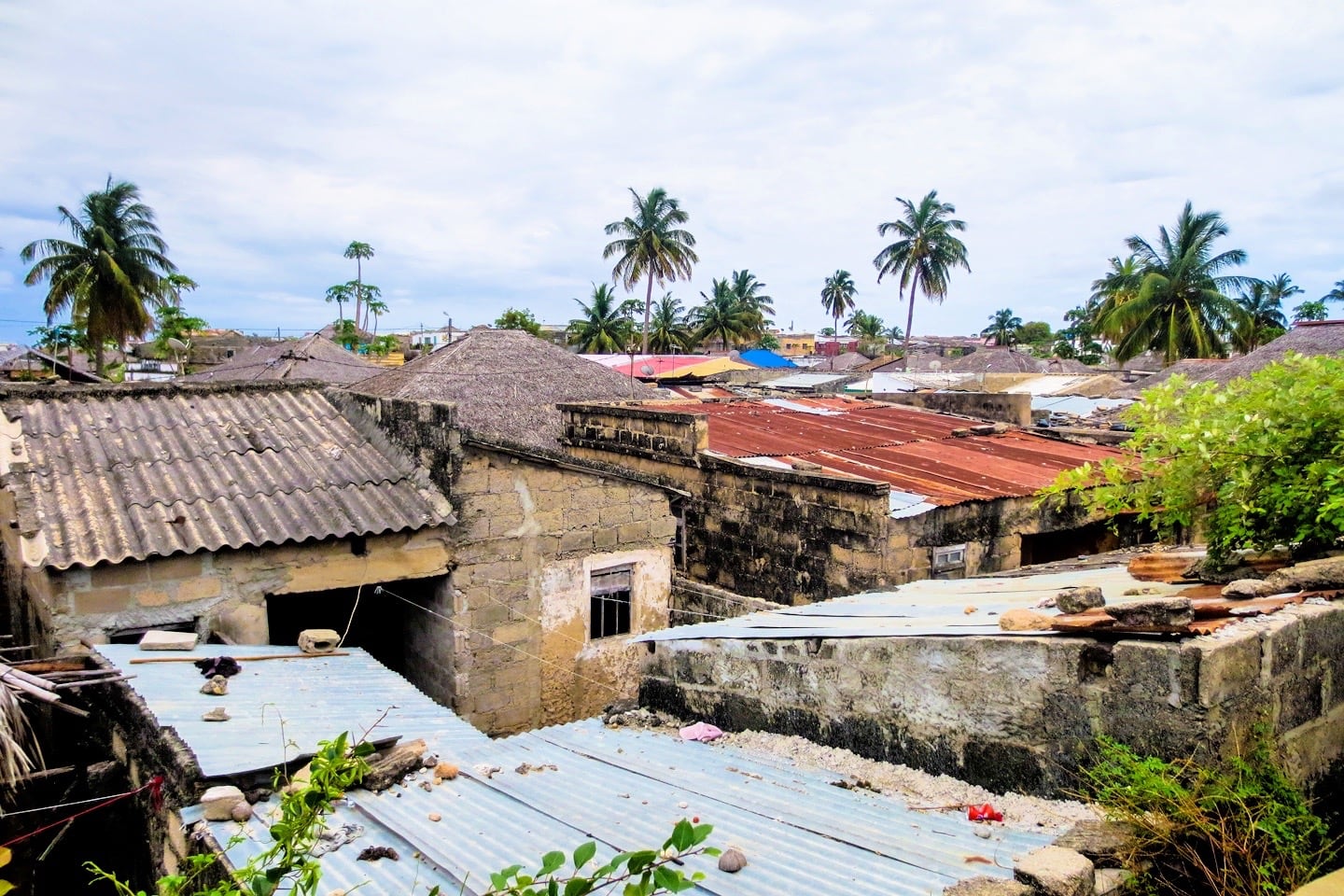
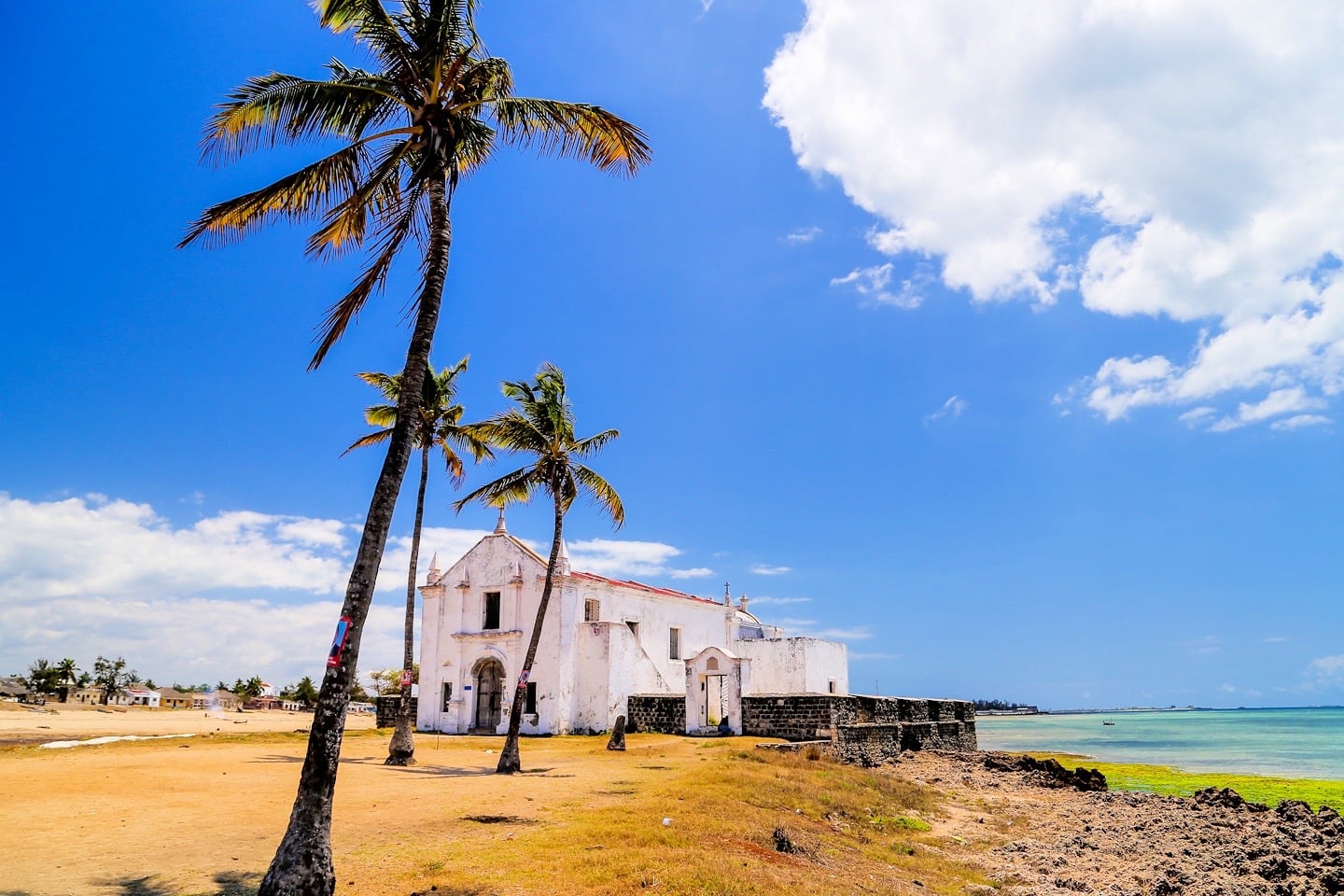
The Fortim-Igreja de Santo António (Fort-Church of St. Anthony) dominates a small palm-fringed peninsula, making for a focal center-piece of the island’s shores.
In the evening, residents spill out from Makuti Town onto this beach to do everything from collecting seaweed to fishing, playing to burning refuse.
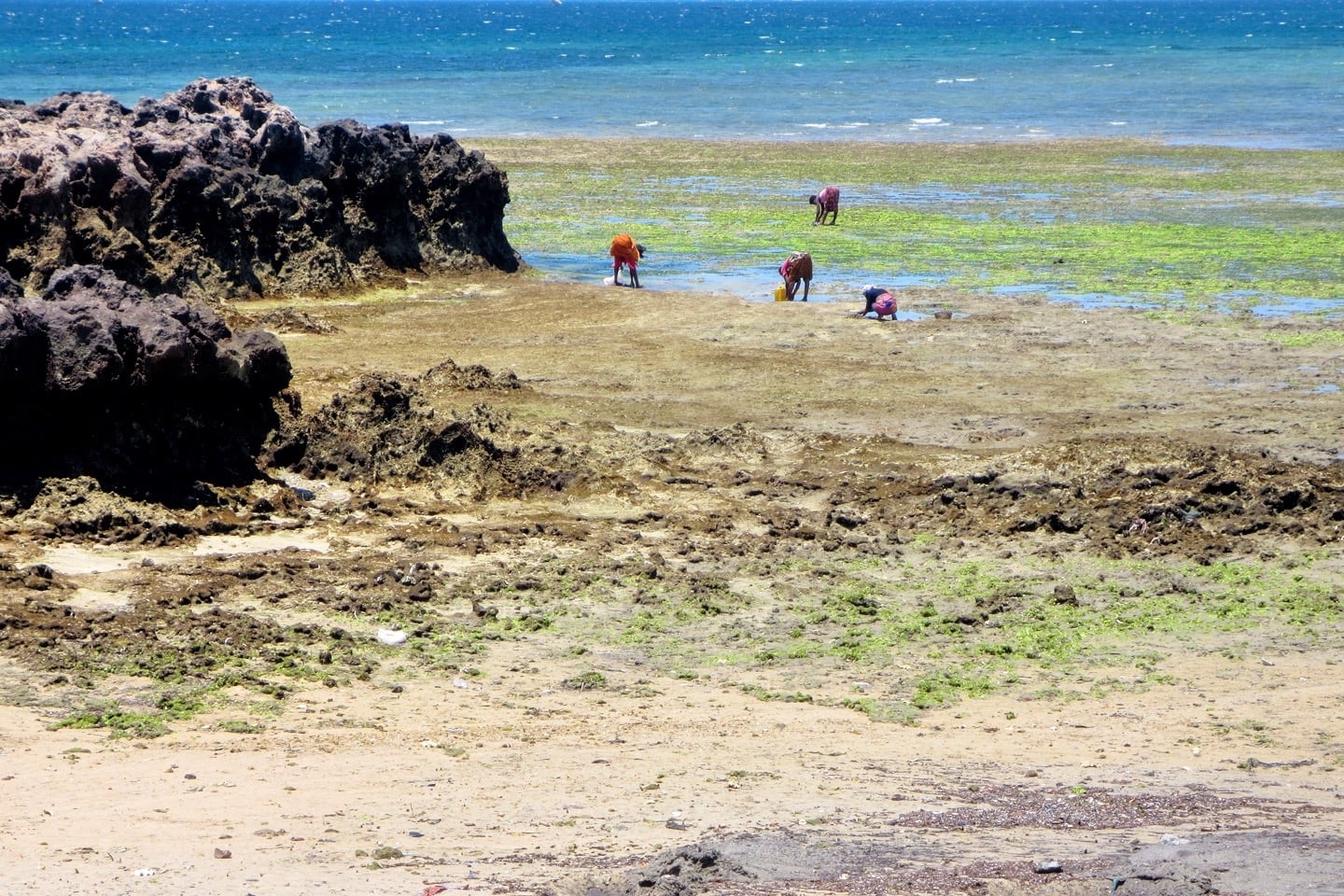
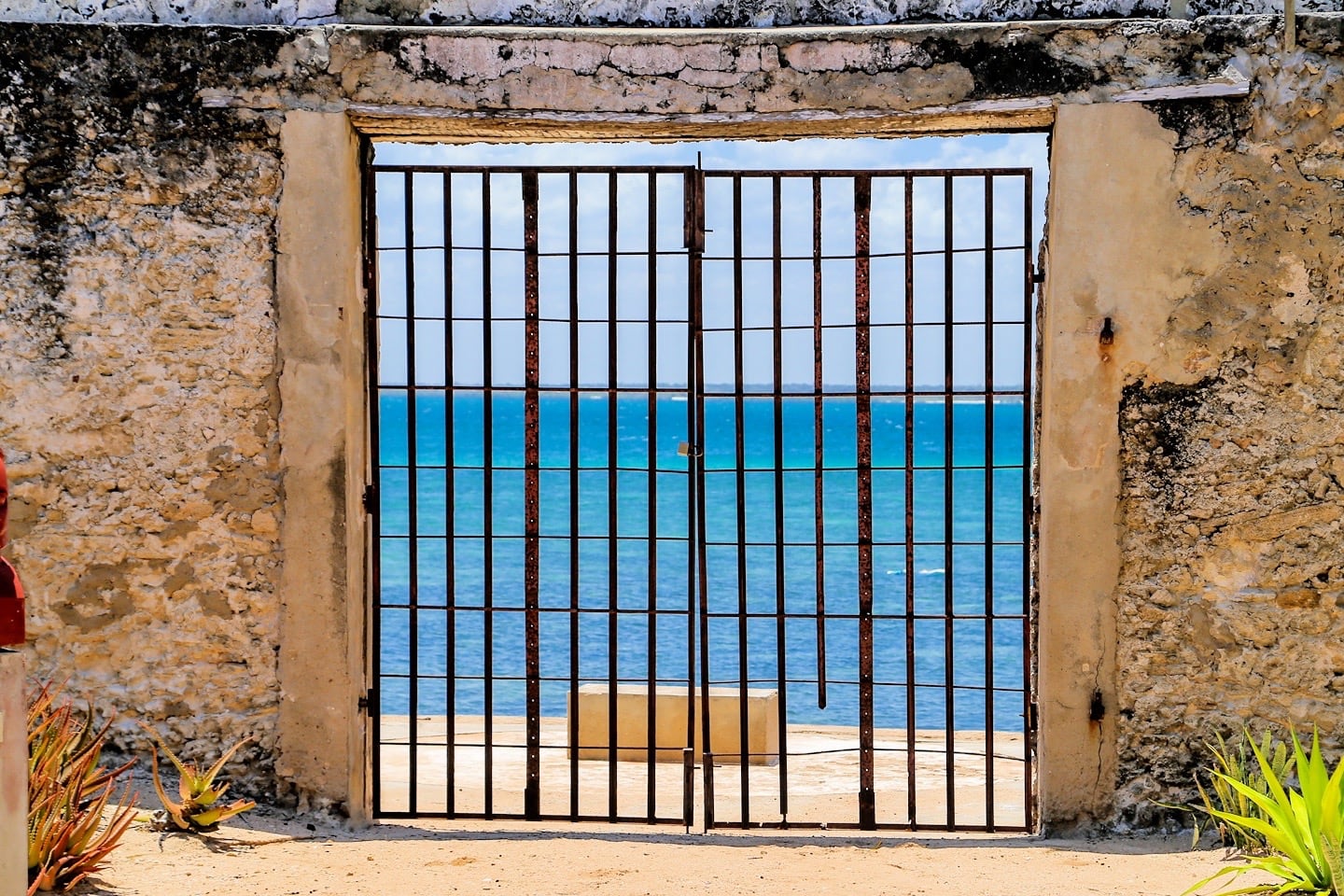
Perched on the shores of the island, these gates stand as a sober reminder of Mozambique’s dark past. Over the course of a few hundred years, nearly a million Mozambicans passed through these gates on their way to enslavement in the Americas. This was the last view these people saw before stepping off their homeland for the final time.
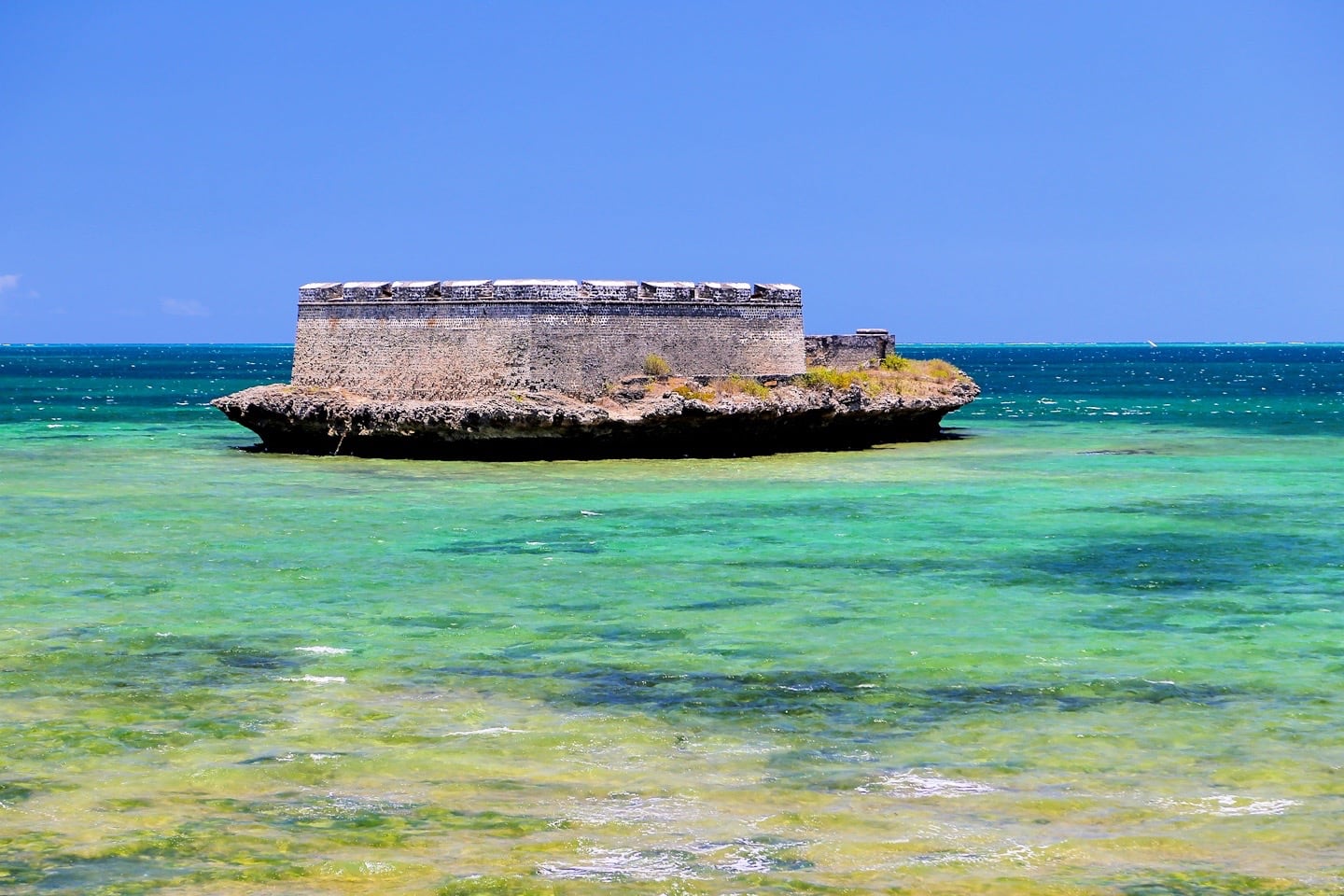
Tiny Ilha-Fortim de São Lourenço makes for a unique adventure at low tide. But be careful to watch the tides as it’s easy to get stranded.
Ilha-Fortim makes for a good snorkel site as well.
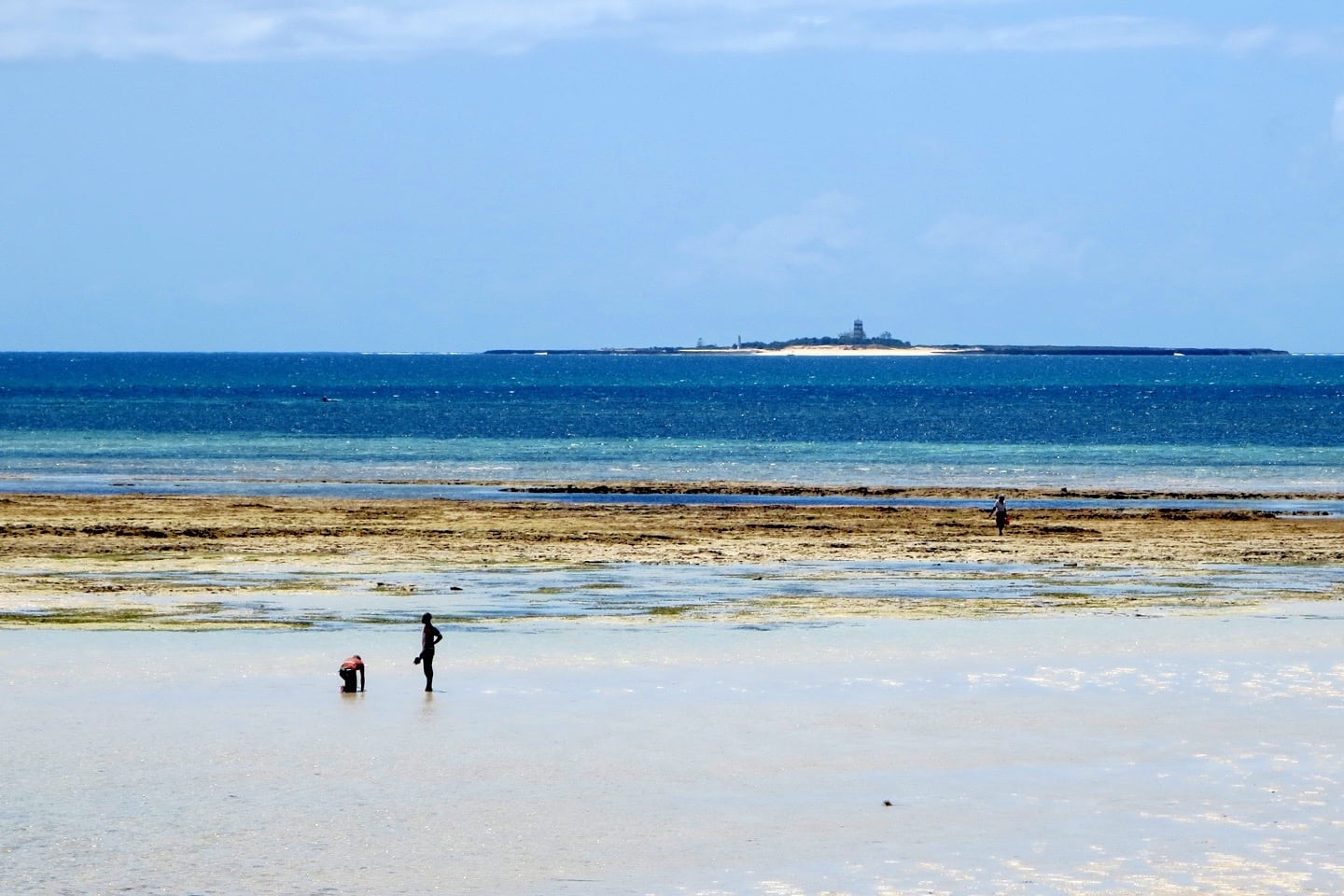
Swimming, Snorkeling & Dhow Trips
The water around the island is crystal clear, awash in a million shades of blue. In most cases, however, Ilha’s waters are not really suitable for swimming right from the shore (certainly not on the eastern/windward side), as the entire town’s waste eventually makes its way to the seashore in some form or another.
Remember, this isn’t some tiny fishing village, but a town of 14,000 people concentrated on an island 3km long by 200-500m wide. Several of the town’s beaches are strewn with trash, sewage, and everything in between (like dirty diapers).
So if you do go swimming or snorkeling, it’s advisable to take a kayak or dhow and go out far or visit one of the beaches on the nearby mainland. Dhow trips and kayaks can be arranged at a handful of tour operators in Stone Town.
RECOMMENDED TOURS ▸ For dhow trips and snorkeling tours, check out top-rated Isla Blue Island Safaris.
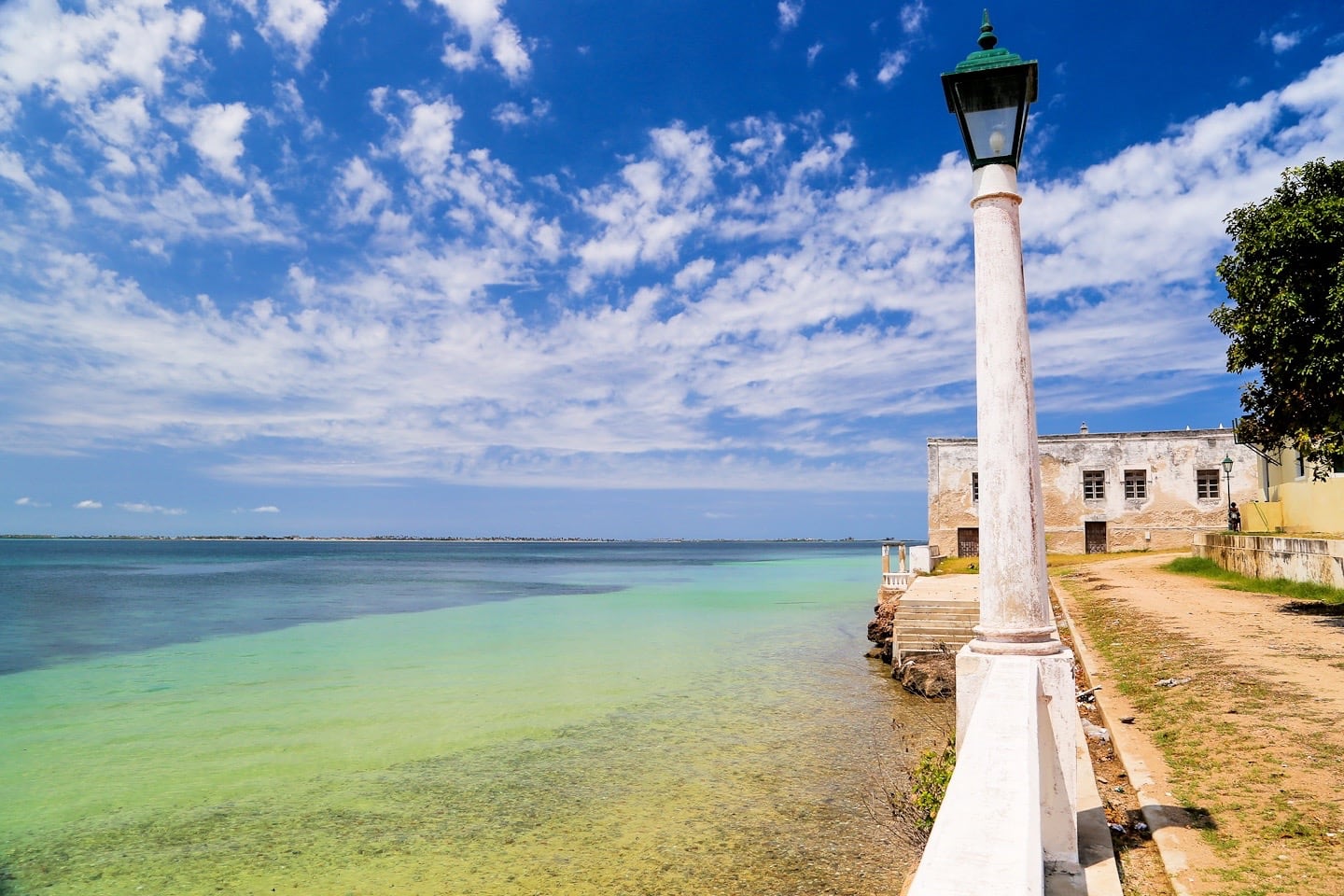
Our Favorite Places to Eat & Drink
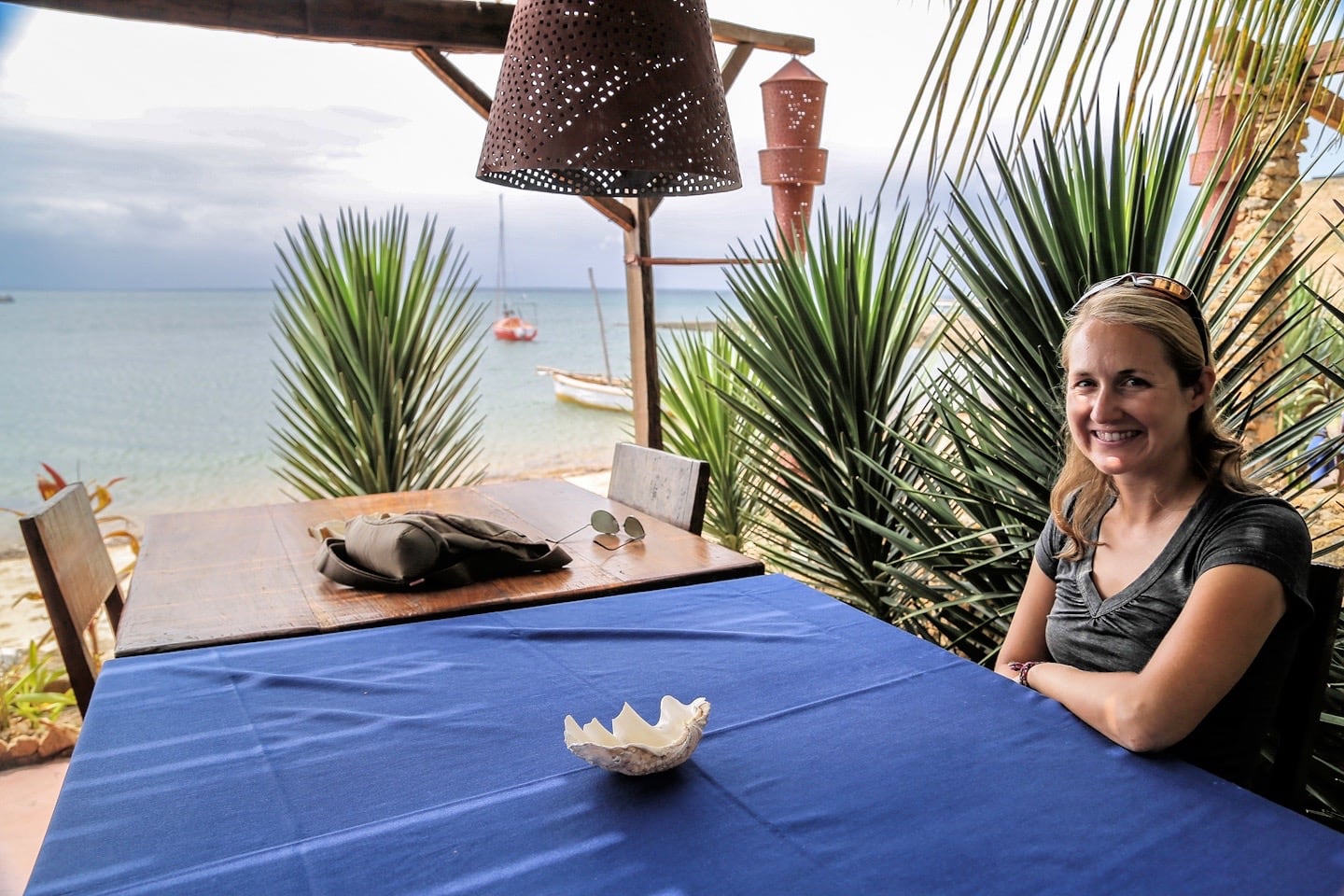
There aren’t yet a ton of eateries geared towards international travelers, but there are certainly enough!
Rickshaws Pousada e Cafe is a longtime local favorite with tasty local fare that’s not to be missed.
For a sea view and fresh seafood, head to the northeast corner of the island where you’ll find Restaurante e Bar Saquina.
For more sea views and a tropical garden vibe, check out Reliquias (pictured above). A fairly reliable bet for local cuisine, Reliquias is particularly atmospheric after dark.
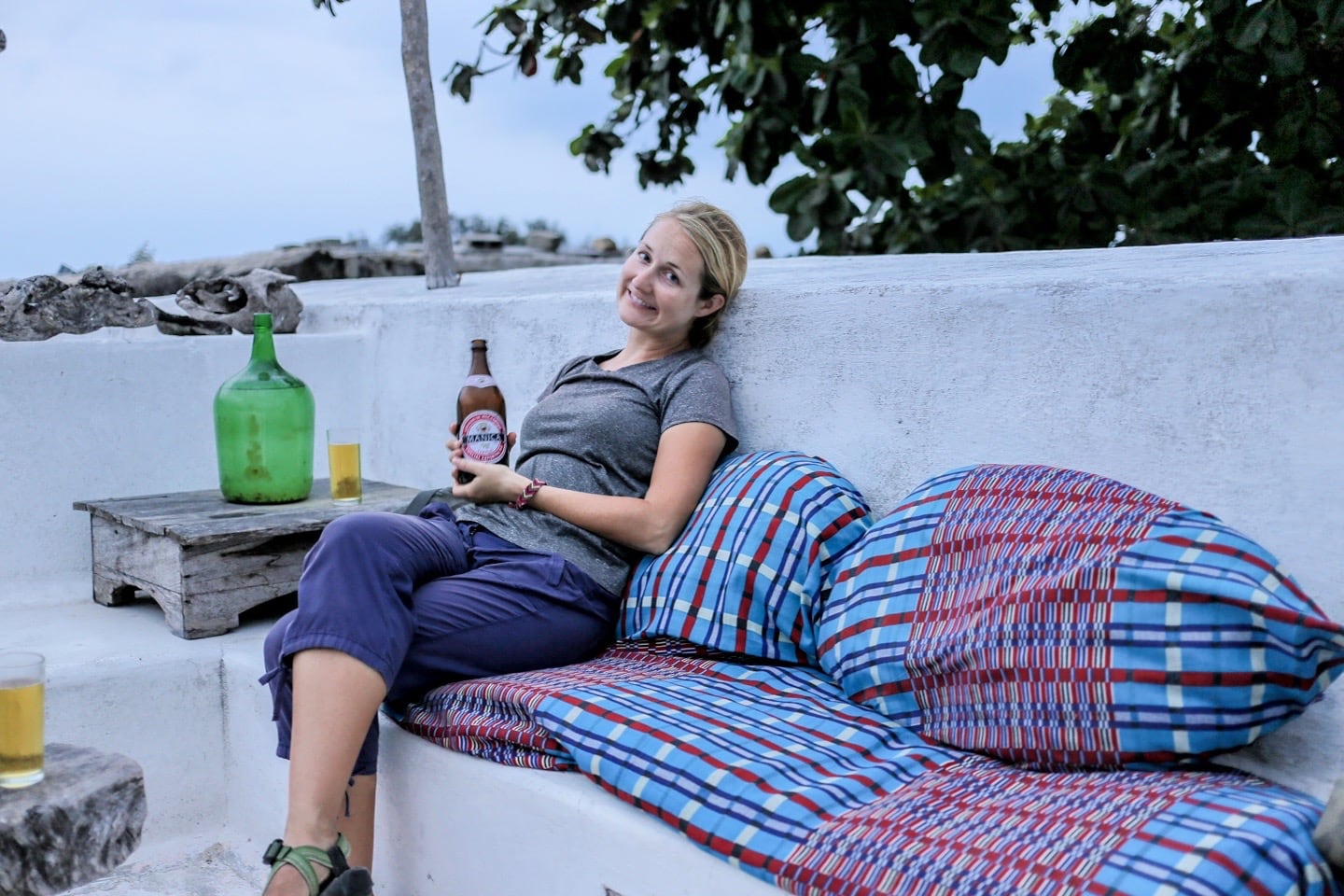
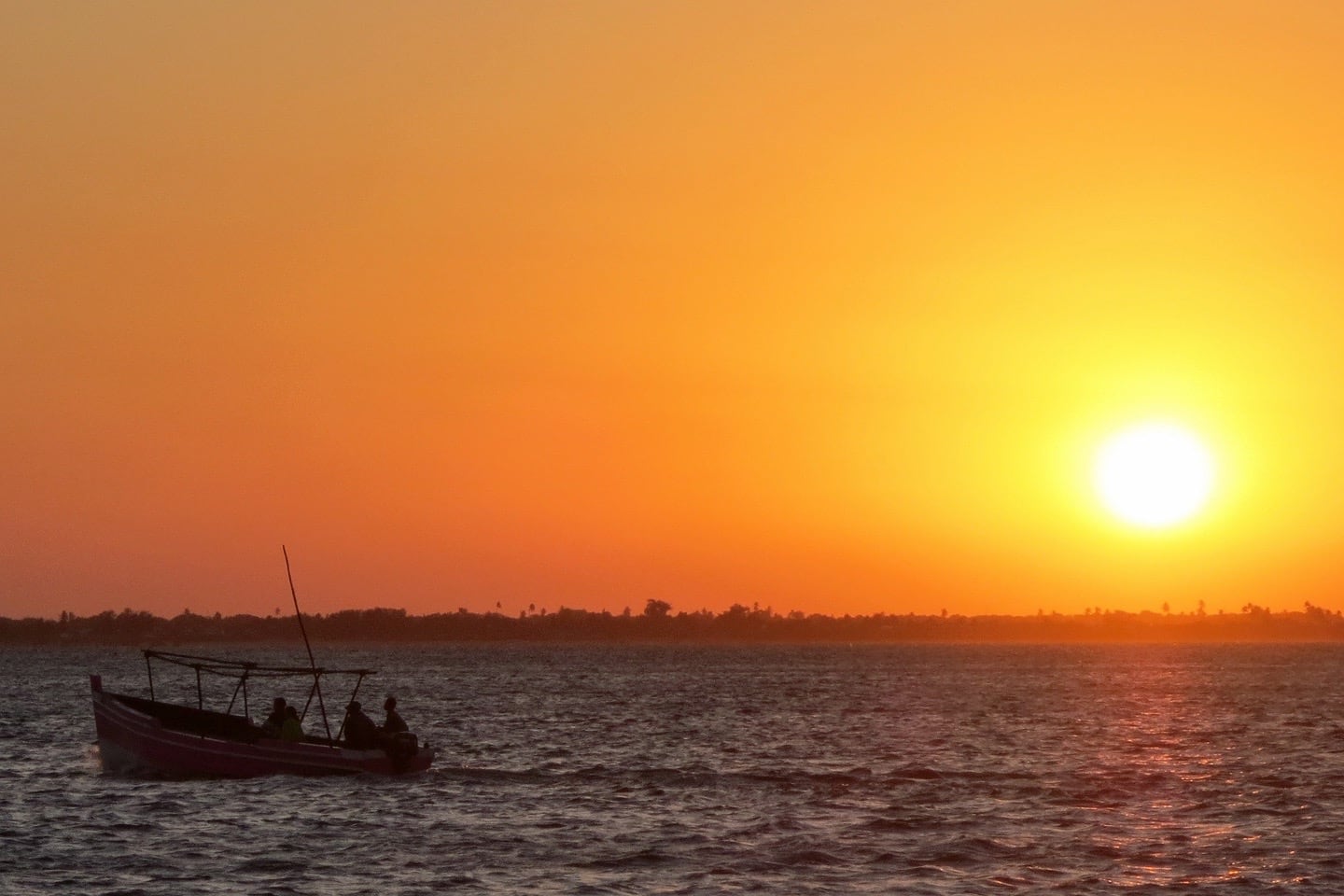
Our favorite sunset activity was getting a beer at O Pontão (the Pier) and watching the sun sink over the bay—beautiful sunsets every night we were there.
After sunset, the island and surroundings get very dark on moonless nights and the end of the pier is perhaps the best place on the island to stargaze.
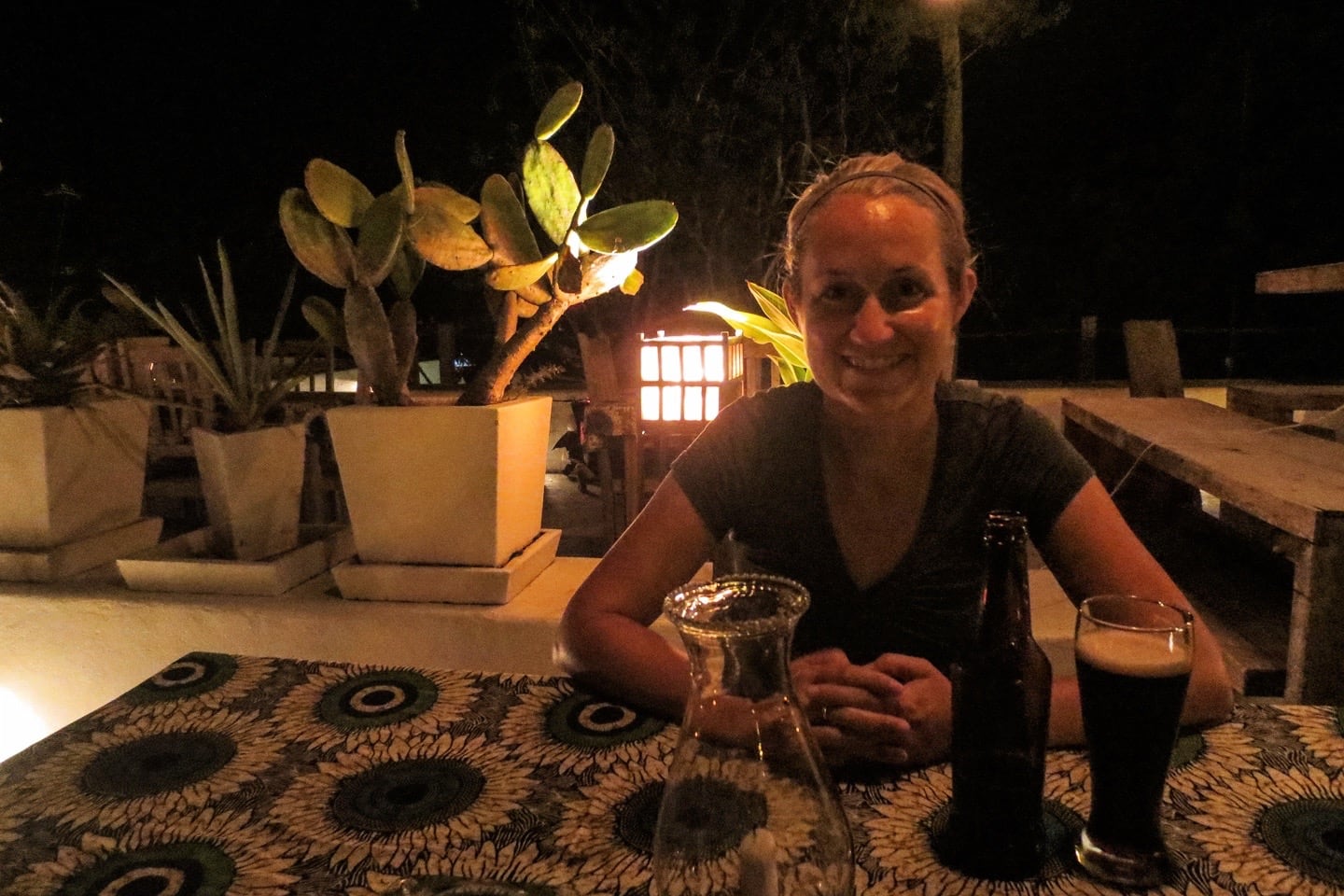
Finally, it took us three days to discover Flor de Rosa Rooftop terrace (read: three days for the restaurant to actually be open!)—but this is a wonderful place to have a sundowner or grab a really delicious meal.
It’s a bit pricey (and when I say pricey, I mean even pricier than usual in Mozambique, which is pretty darn pricey by East Africa standards). But starters can be had for under US$7 and are a nice departure from the usual.
But be warned! The dinner crowd on the rooftop threw us for a loop after not seeing many Western travelers for a while. Not necessarily a bad thing, just an unexpected surprise.
What to Pack for Mozambique Island
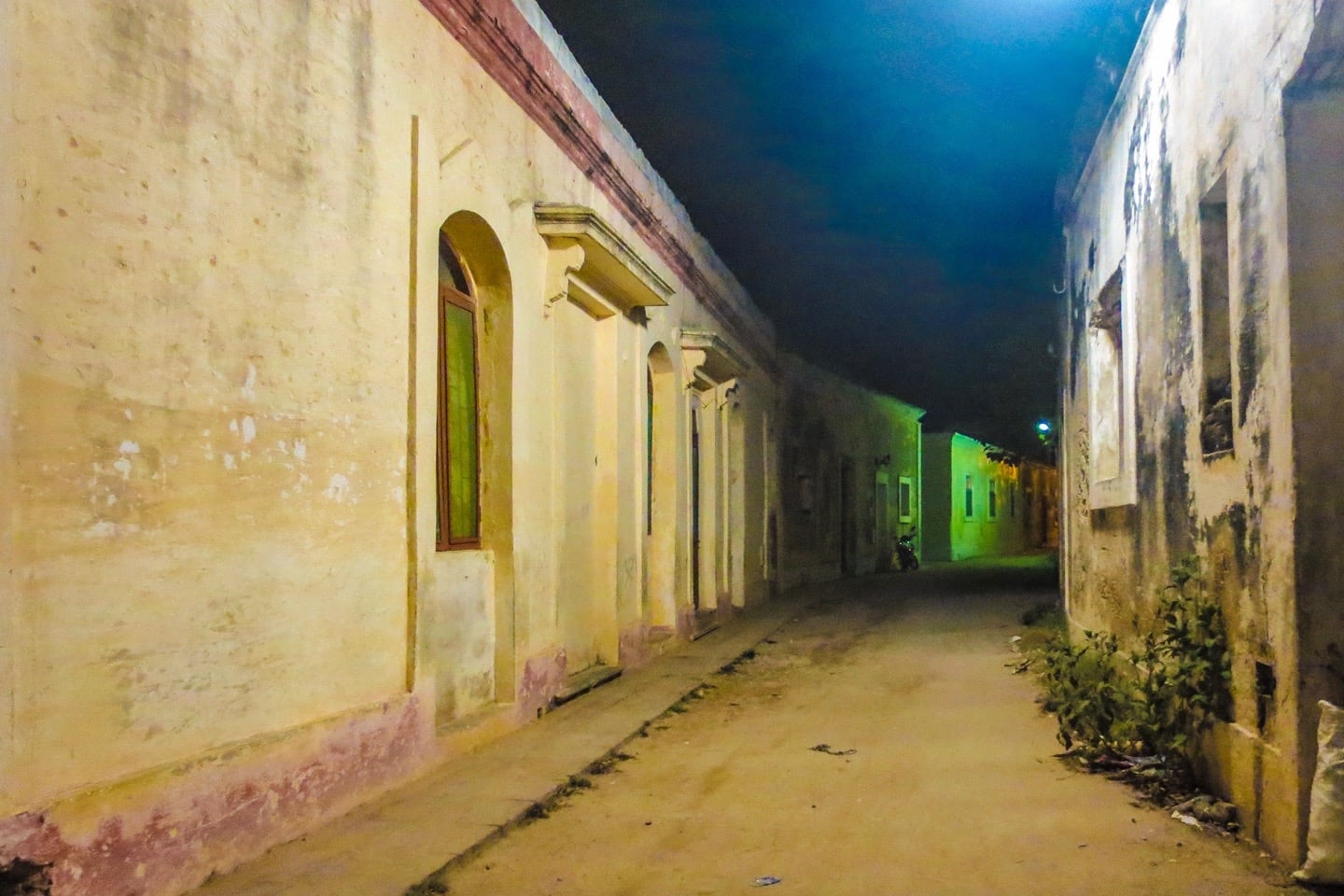
First off, make sure you stay well protected from the sun. The sun gets more brutal the farther north from Maputo you travel! A biodegradable sunscreen is always a good idea, along with an SPF-rated rash guard for swimming and doing other water sports. And a wide-brim sun hat comes in handy for just about all your island explorations.
Mozambique has distinct wet and dry seasons. If you find yourself here between October and March, you’ll want to pack a lightweight, breathable rain jacket.
Plan to do a lot of walking around the island. Pack a good pair of hiking shoes or sandals (sandals are more practical in the rainy season).
And remember to bring your reusable water bottle! Most restaurants don’t provide drinking water free of charge, and you’ll want to stay well-hydrated in the hot and tropical climate.
Lastly, it probably goes without saying, but you’ll want to bring along a good camera to capture this once-in-a-lifetime experience.
How to Get to Mozambique Island
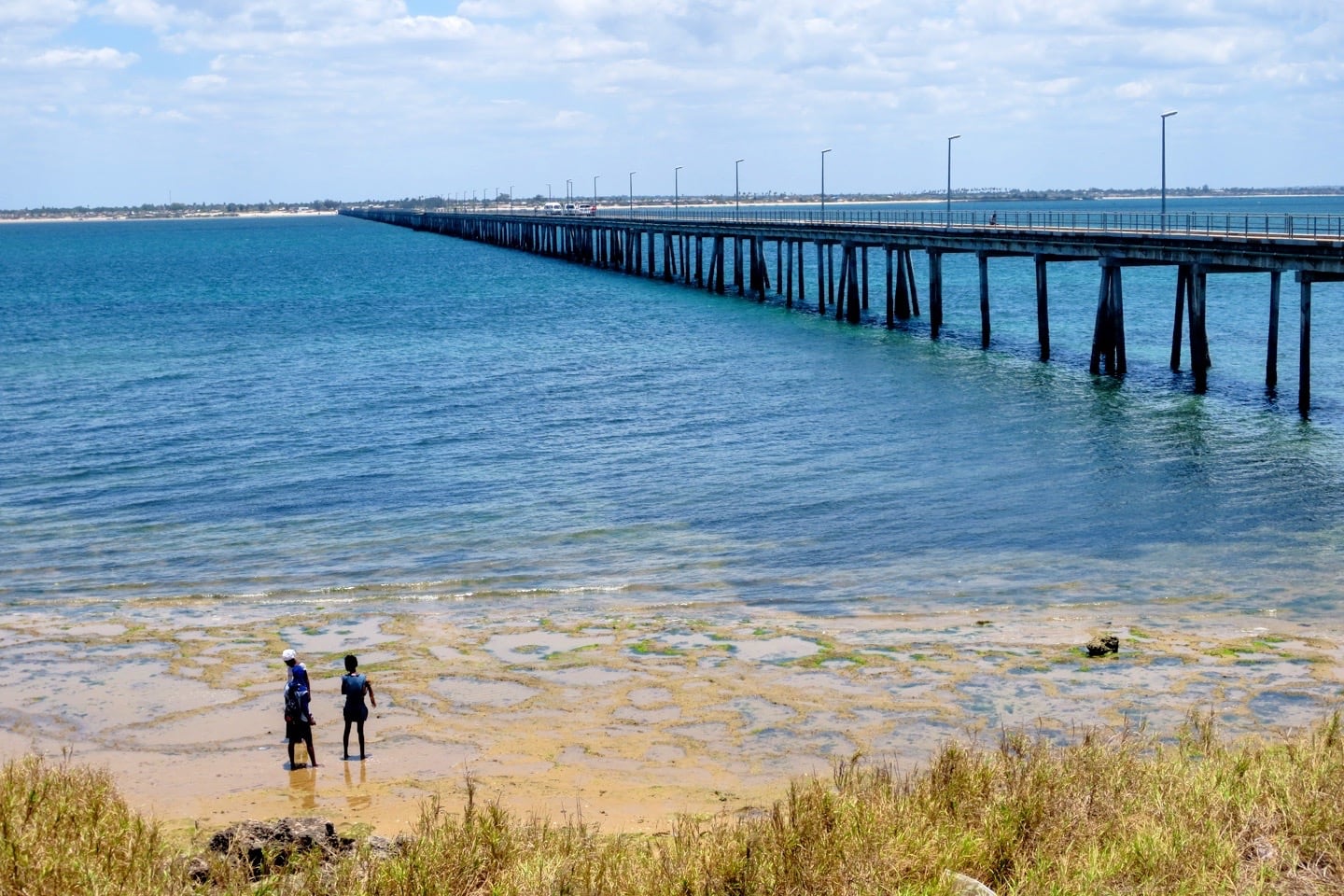
As previously mentioned, Ilha is not easy to reach. You can’t simply fly to the island or take a tourist shuttle from the nearest major city.
You could arrange a chartered flight into Lumbo airstrip on the mainland opposite Ilha for a pretty penny. But let’s be honest, if you’ve got that kind of money to devote to Mozambique travel, you probably aren’t reading this guide.
With the following transport advice, keep in mind that Mozambique is one huge country with a coastline twice that of California’s (and a road infrastructure that tends to be one of the worst in the region).
If you have the time, I highly recommend exploring the length of this amazing country by land.
But do keep in mind, you’ll be in for half a dozen or more very long days on local buses (and very long days on chapas (Mozambican collective minibuses) for those who aren’t as lucky to snag a big bus).
By Air
If you’re visiting Mozambique and short on time, you can cut a great deal of time off your journey to Ilha de Mocambique by flying from Maputo to Nampula, then getting overland transport the rest of the way.
Alternatively, you can fly into Nacala and make your way overland to Ilha, but when we did the journey, the consensus was that the easier route was from Nampula. If you’ve done this route recently, please let us know if this is no longer the case!
By Bus/Minibus
As with travel in most developing countries, transport options are always in flux, which means there may be more or even fewer options in the future depending on a variety of factors.
Our experience has been that there are a variety of large coach-style buses that can get you from Maputo and Pemba, and major points in between. However, smaller minibuses will likely be the primary mode of transport between Nampula/Nacala and Ilha de Mocambique.
Minibuses to Ilha de Mocambique leave from Ave de Trabhadores next to the Nampula Railway Station.
Insider Tip
Ask for the larger “Tanzaniano chapas” (as opposed to the cramped and uncomfortable regular chapas). The Tanzanianos look more like a small bus than a minivan). Confirm that the minibus is going all the way to Ilha de Mocambique and not terminating somewhere in between.
We snagged seats on a Tanzaniano from Nampula station at a little after 9am, the bus left full at about 10:30am and we arrived at the bridge connecting Mozambique Island with the mainland a little after 1:30pm (about 3 hour travel time).
At the Ilha bridge, you are required to get off the chapa and into a shuttle which will either simply ferry you across the one-lane bridge, or continue on into town.
We stayed at Ruby Backpackers in Nampula and found them incredibly helpful with getting the latest information on options and travel times to Mozambique Island. They can also arrange private transport, which is particularly helpful if you plan to travel to Mozambique Island at off times or are traveling with a group.
Final Thoughts
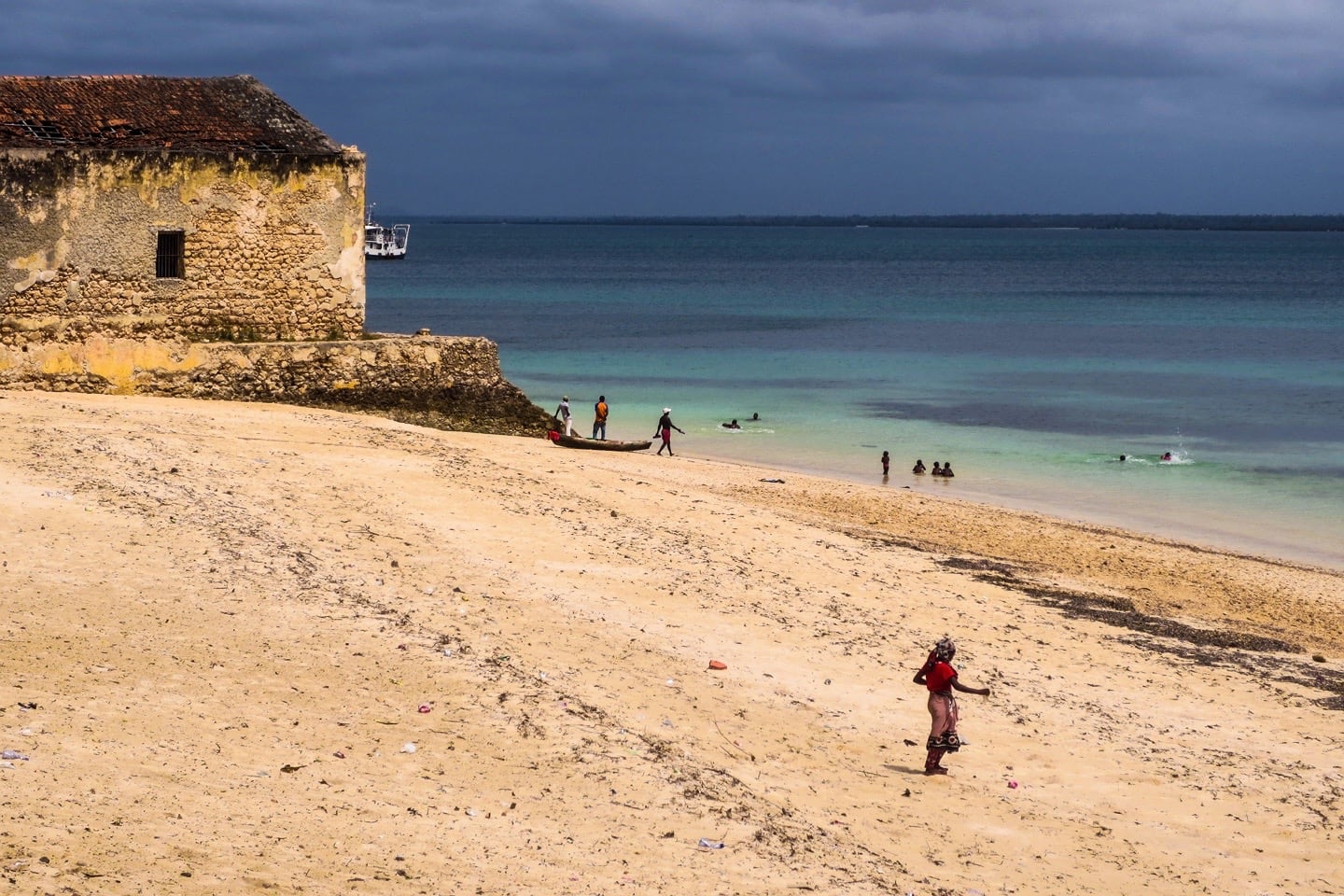
Despite the World Heritage Status and recent [modest] influx of tourism, Mozambique Island remains very poor with few public services.
It all makes for an interesting (and sometimes uncomfortable) juxtaposition—relatively affluent Western visitors and much less affluent residents crossing paths amongst starkly beautiful and decaying colonial buildings whose original occupants have long-vacated.
It really is like nowhere that Lori or I have ever been. We can try and draw comparisons but there really aren’t any.
The Island of Mozambique is an island frozen in time…sort of. More like left in time. Left by the Portuguese, but not by the native Mozambicans who still inhabit the island.
Certainly, the character of the island has changed over the past hundred years, but against a static backdrop of shops, mansions, fortresses, and churches.
The little tourism that Mozambique Island does receive hasn’t seemed to change it much, not in the way tourism and UNESCO funding has changed many other places. The island does not feel contrived in the way of Williamsburg, Virginia (USA) or spoilt like Venice, Italy.
It is what it is. And that’s more than enough for a worthwhile visit.
But is it enough to draw mass tourism? Probably not (not yet, at least), which has both its benefits and drawbacks.
If you visit Mozambique Island with the mindset that it’s not going to provide you with the comforts of other UNESCO sites but that it’s like no other place on Earth, then that’s a good place to start.
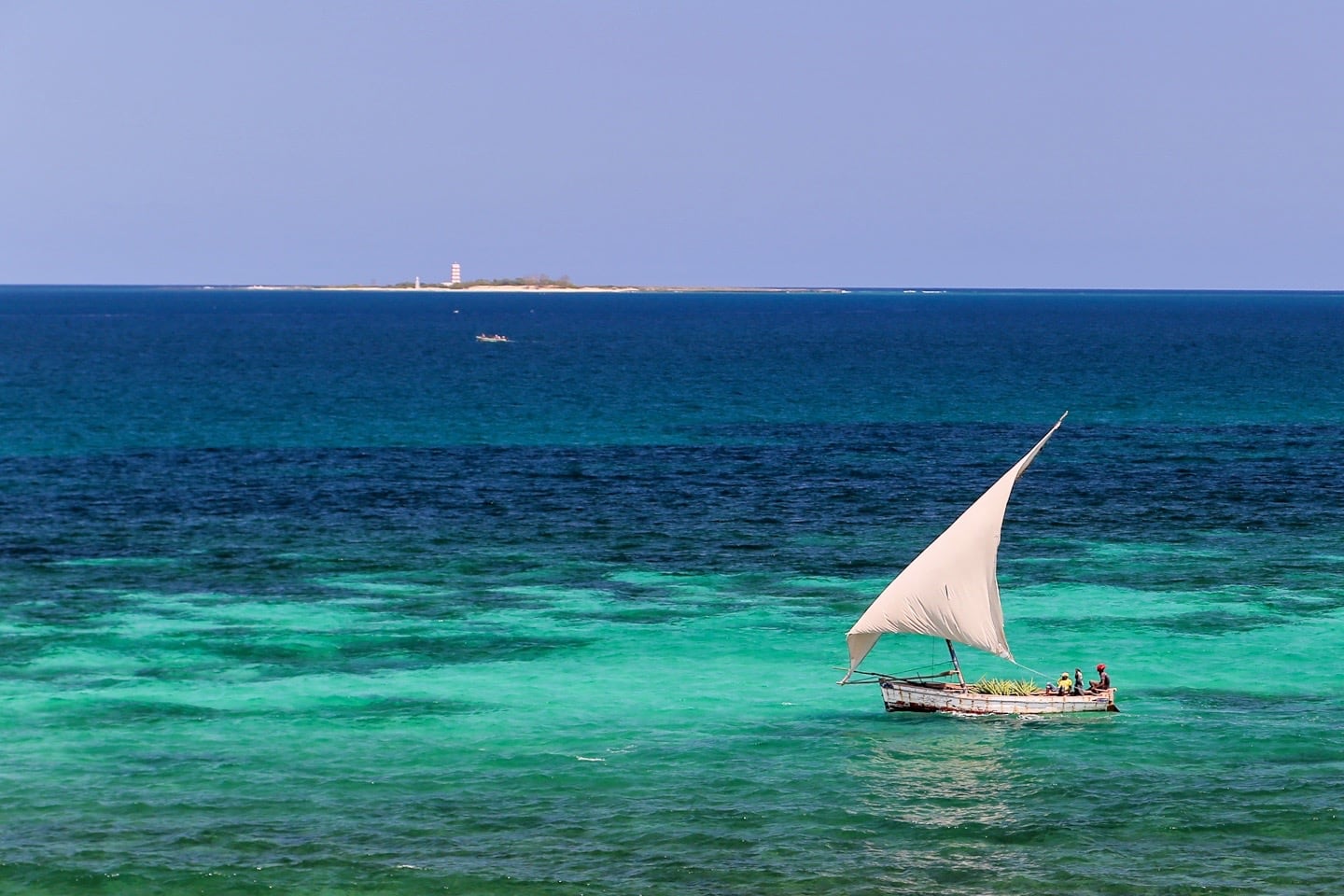
Planning a Trip to East Africa?
Check out some of our other helpful guides:
- KENYA BEACHES – 12 Best for Fun & Relaxation
- LAMU ISLAND, KENYA – 12 Captivating Reasons to Visit
- JAMBIANI BEACH – 8 Reasons to Visit Zanzibar’s Best Beach Hideaway
- SHELA VILLAGE – A Bohemian Beach Paradise on Lamu Island
Have You Visited Mozambique Island?
What was your experience like?
Let us know in the comments below.
Thanks for the post and tips. We visited the island last august and stayed at Feitoria. We really enjoyed the stay and the atmosphere. It seems that several houses are now being restored, promising an even more beautiful island. A tip is to stock up a bit before you go to the island, as there are not a lot of shops around. We drove all the way from Maputo (3 days, some roads really poor) and were happy we did bring some basics. If you plan a visit, don’t forget a trip to the islands close by. And note if you want to visit Goa, Sete Paus to bring your own drinks and food
Thanks, Gerben, for the update and helpful tips!
This is all brilliant advice, and I only wish I’d been told some of these things before I first travelled solo. Although you learn these things on the way it’s nice to be reminded,
Definitely bookmarking this post , It’s very helpful guide.. Thanks for sharing this 🙂
Thanks for your comment, Nour. Happy to hear that!